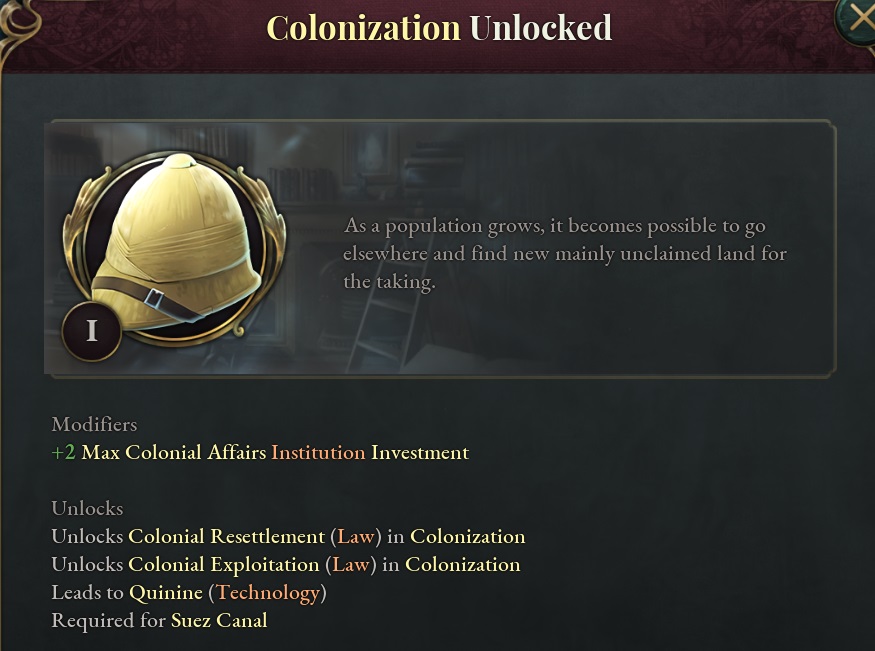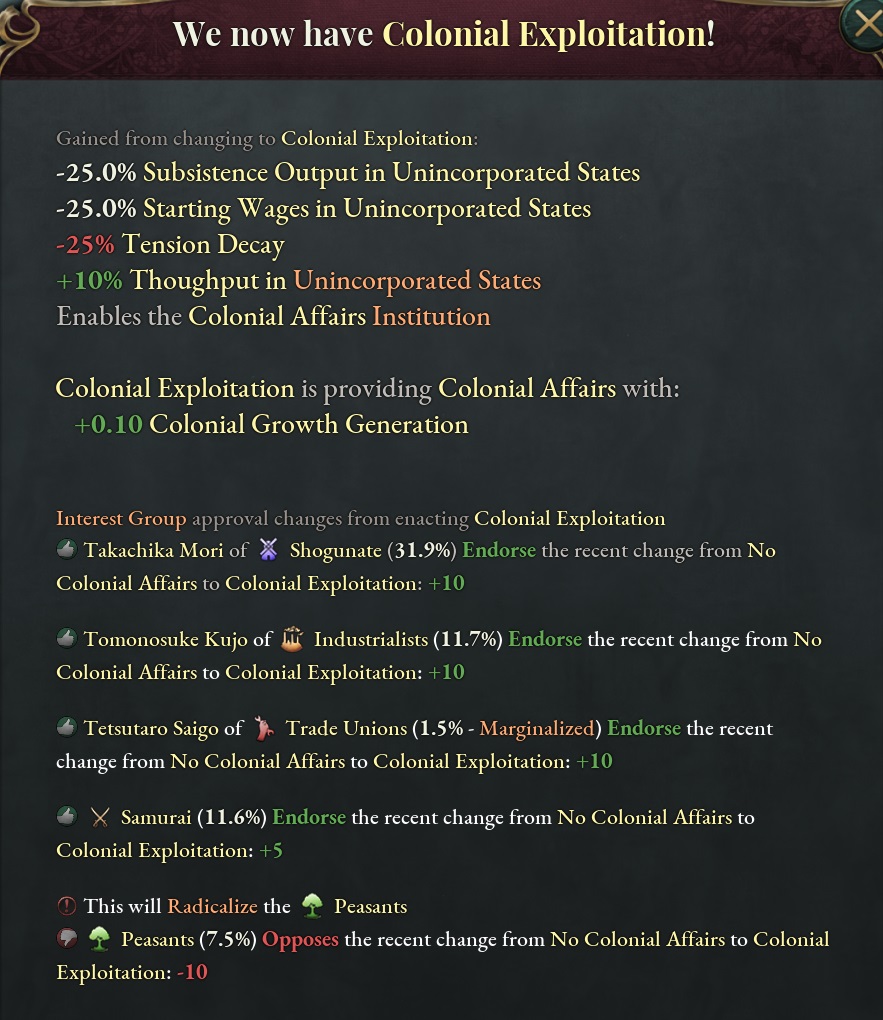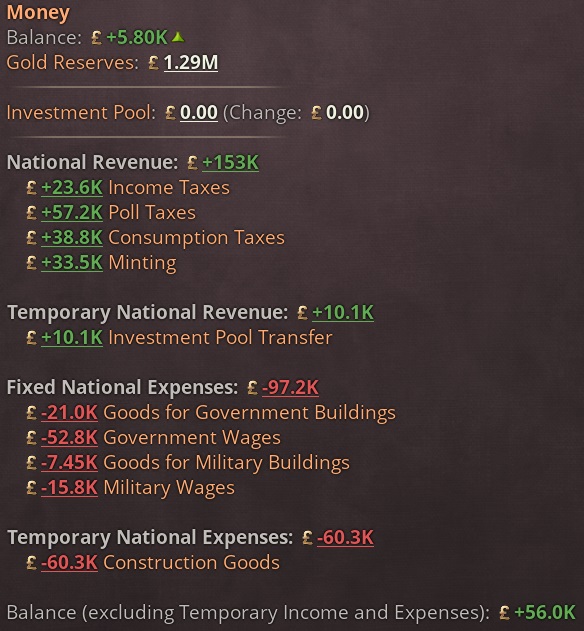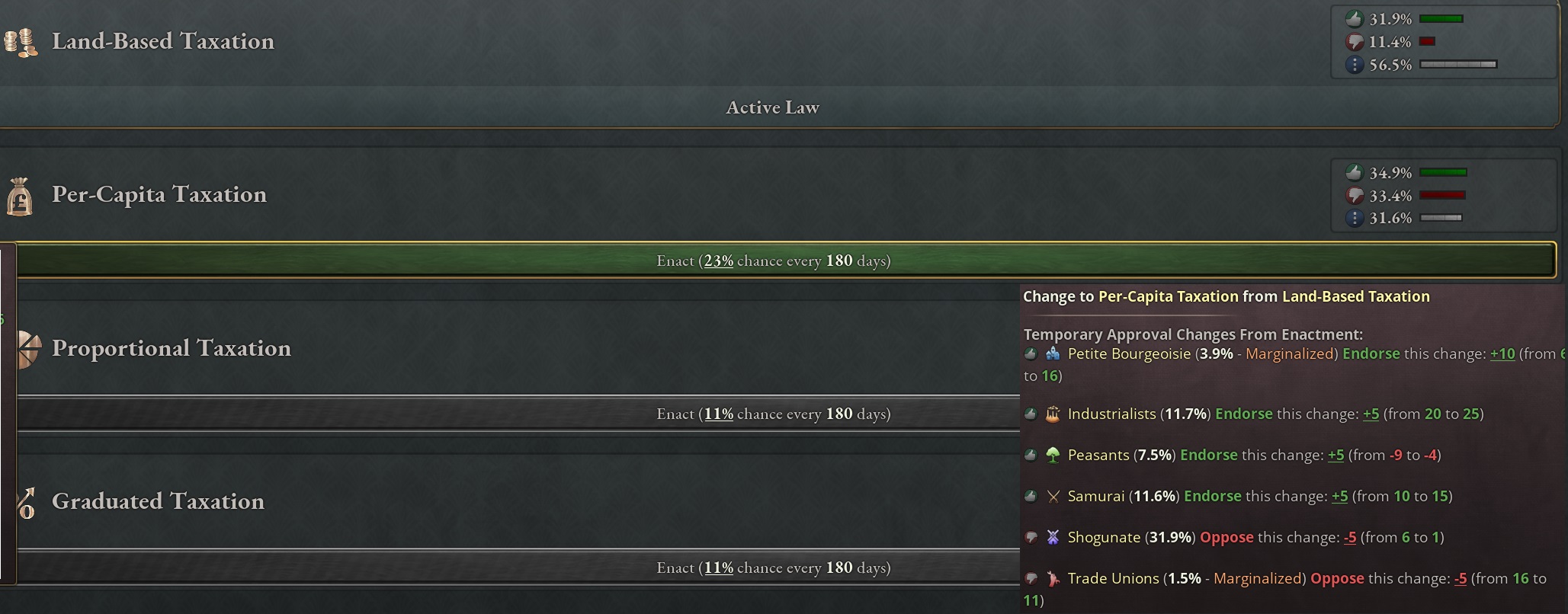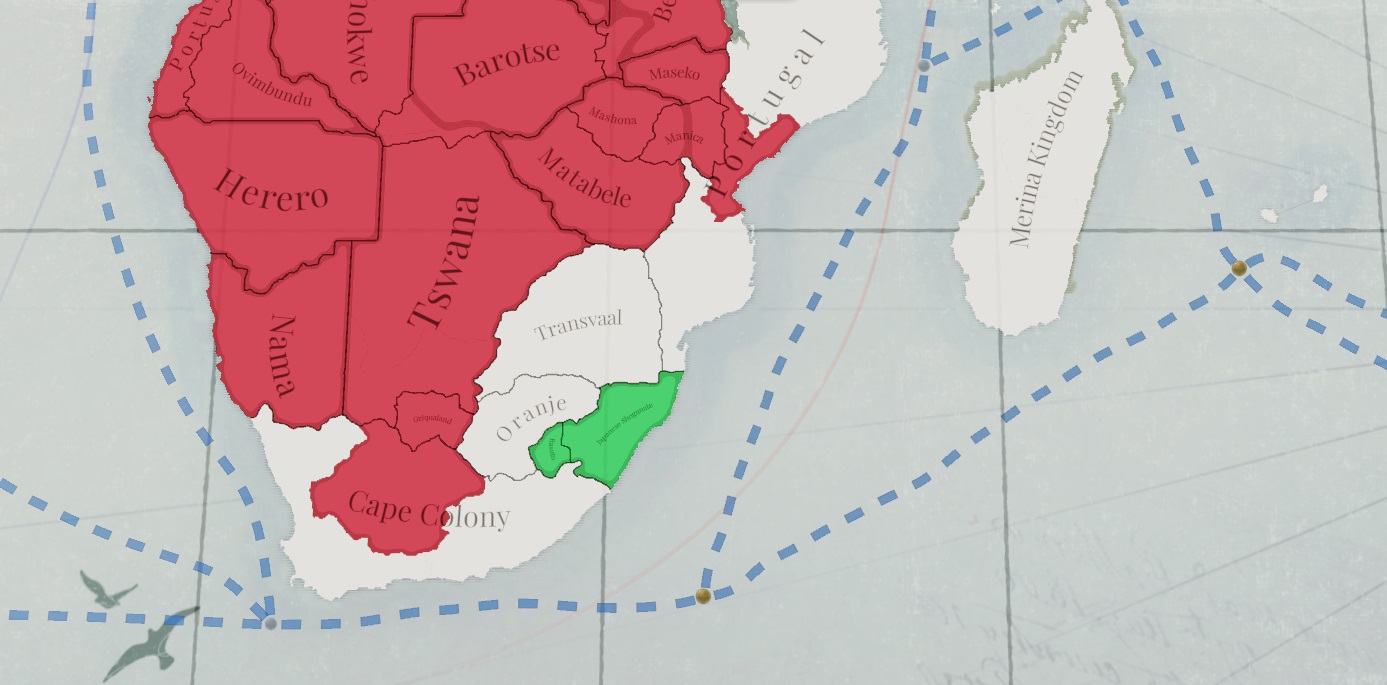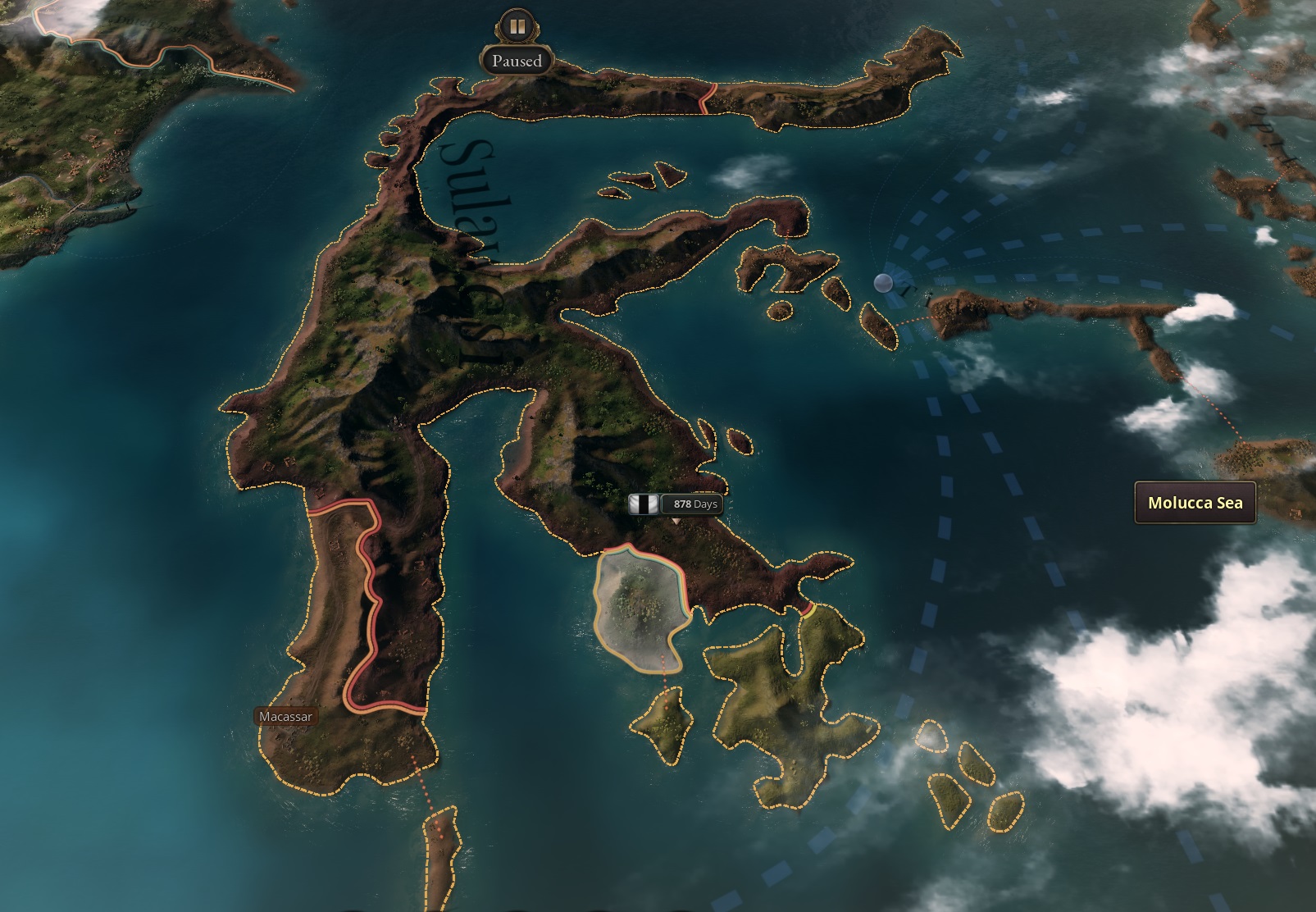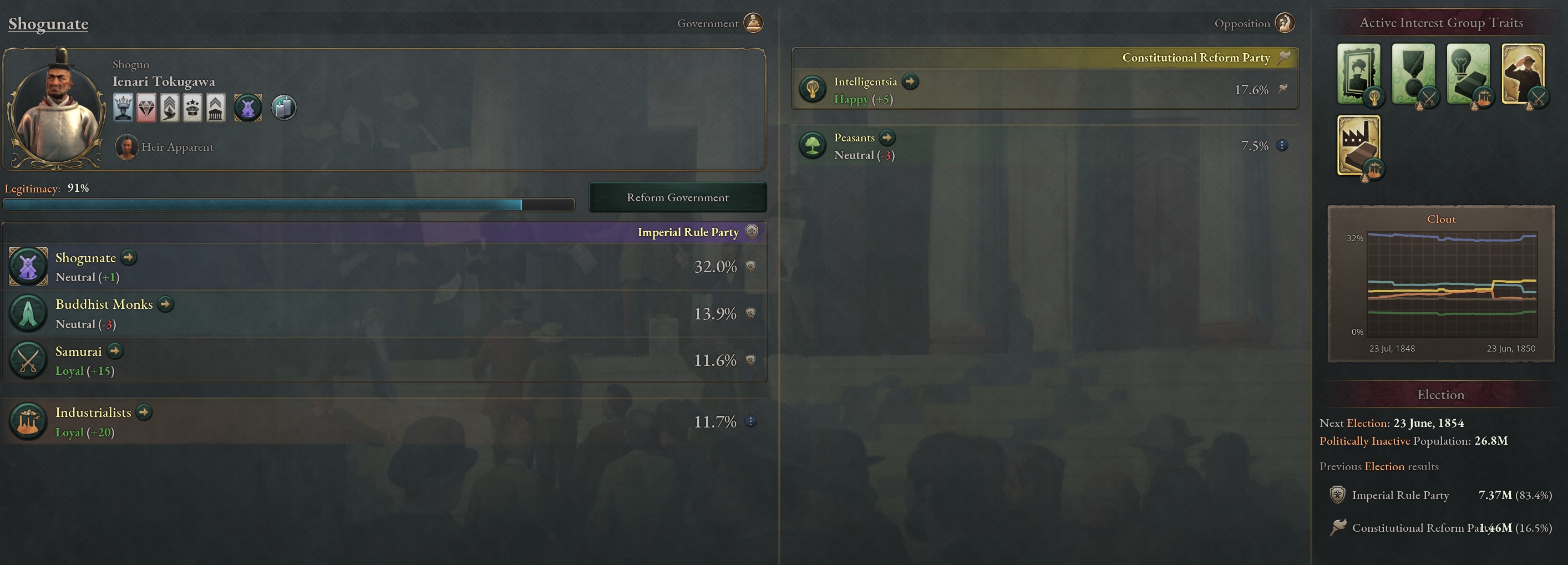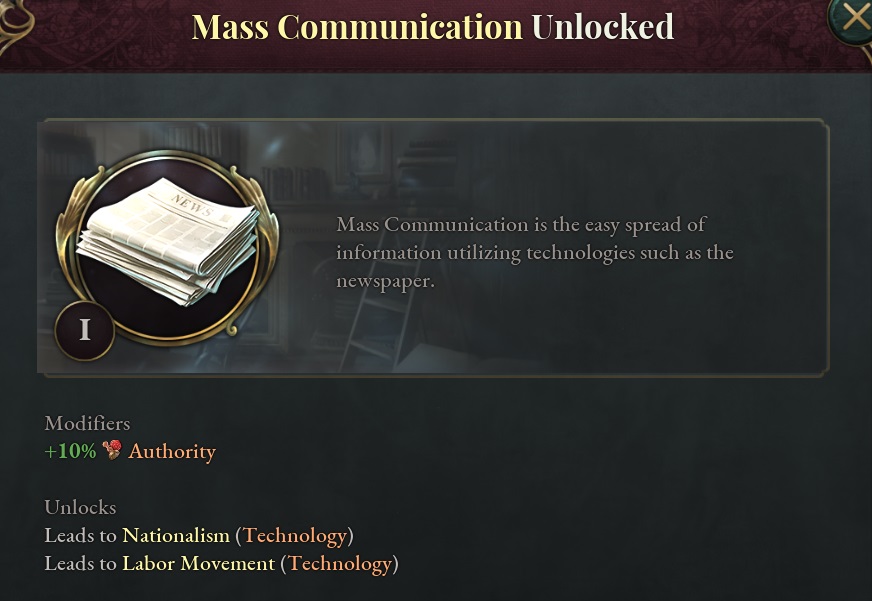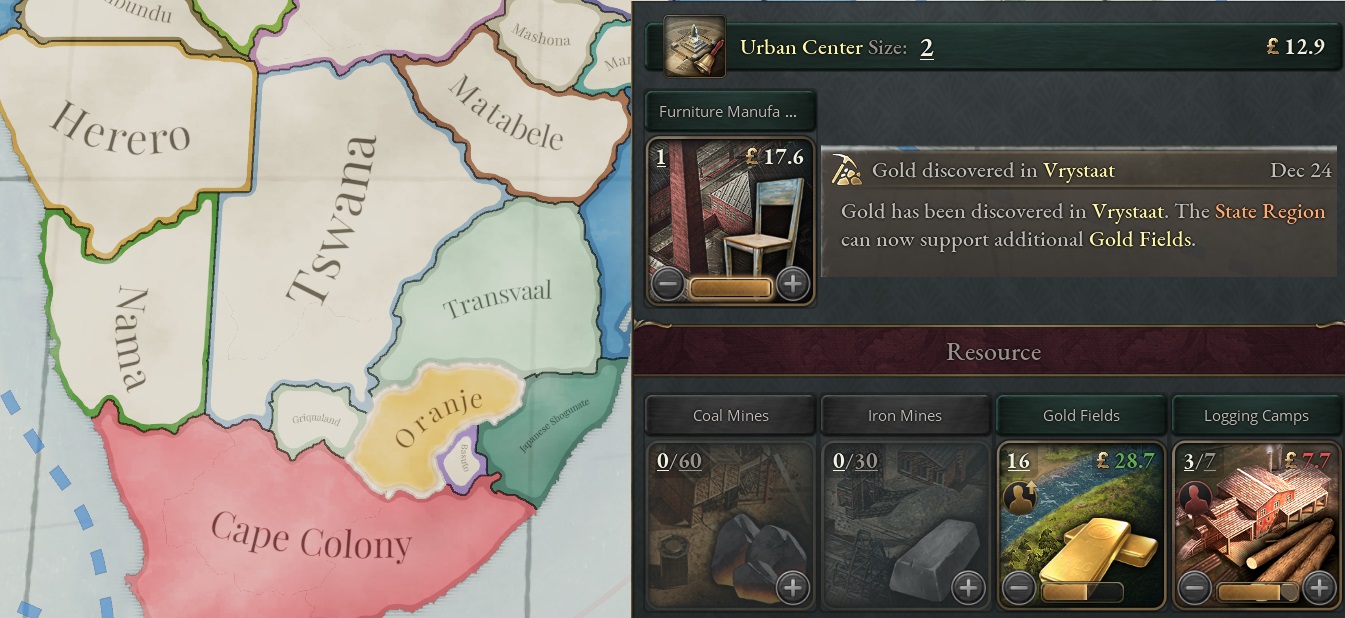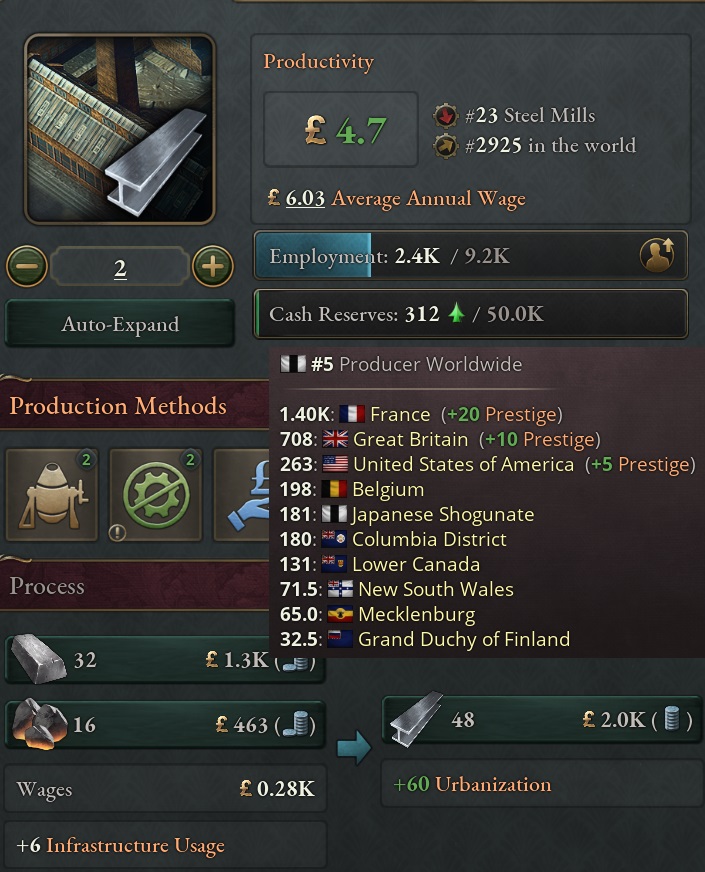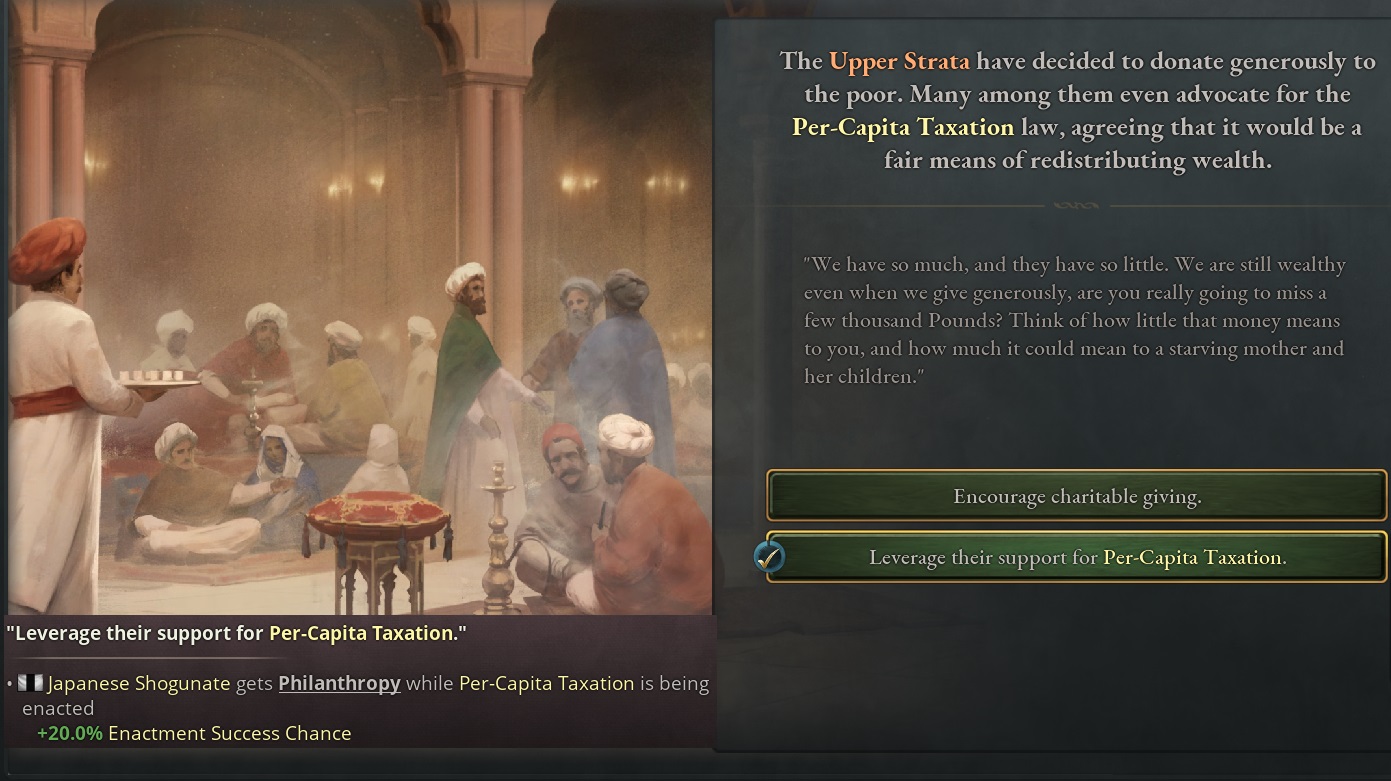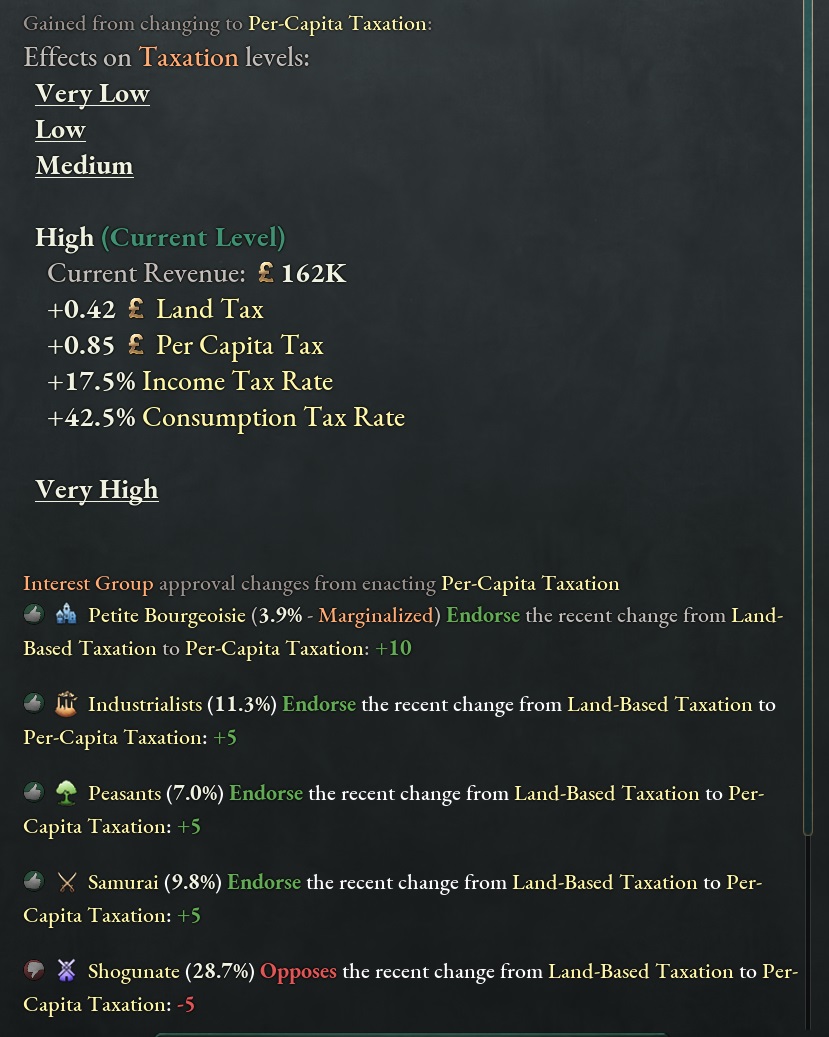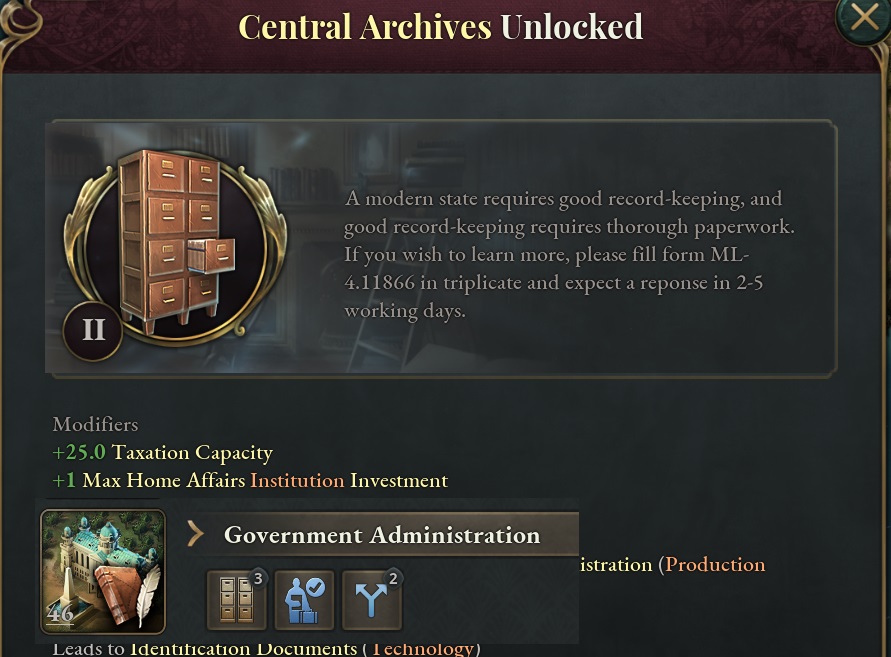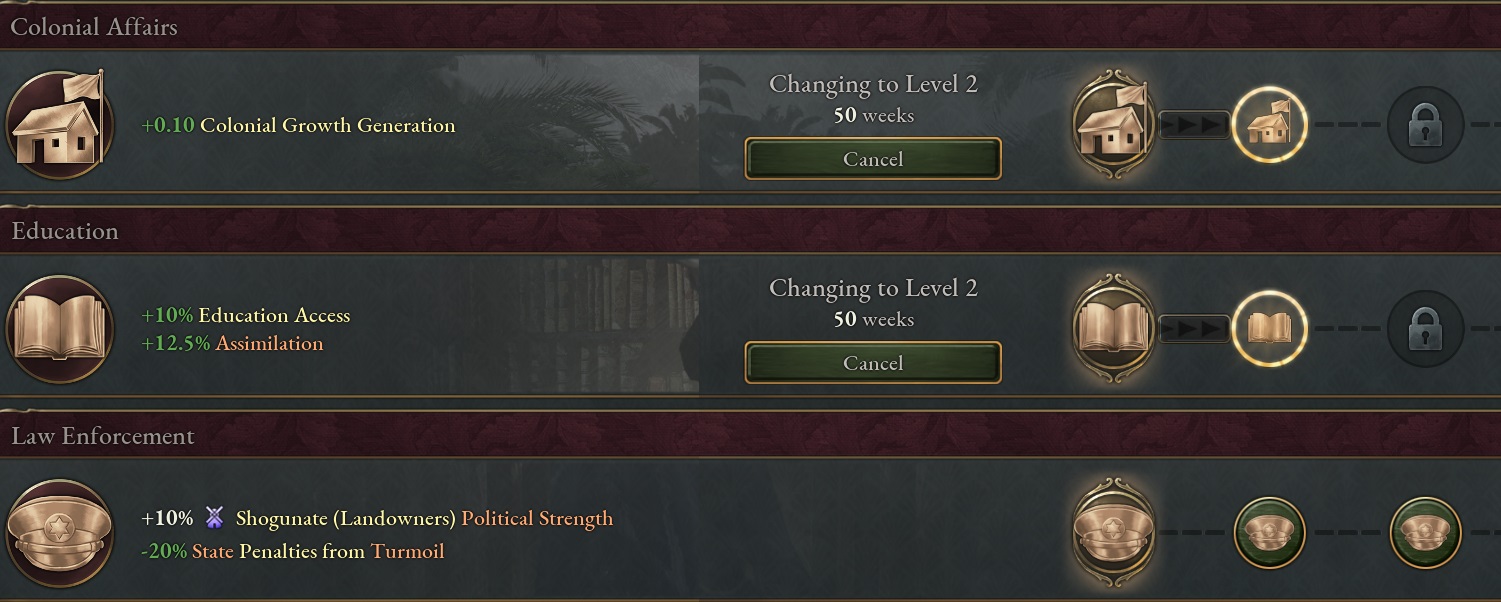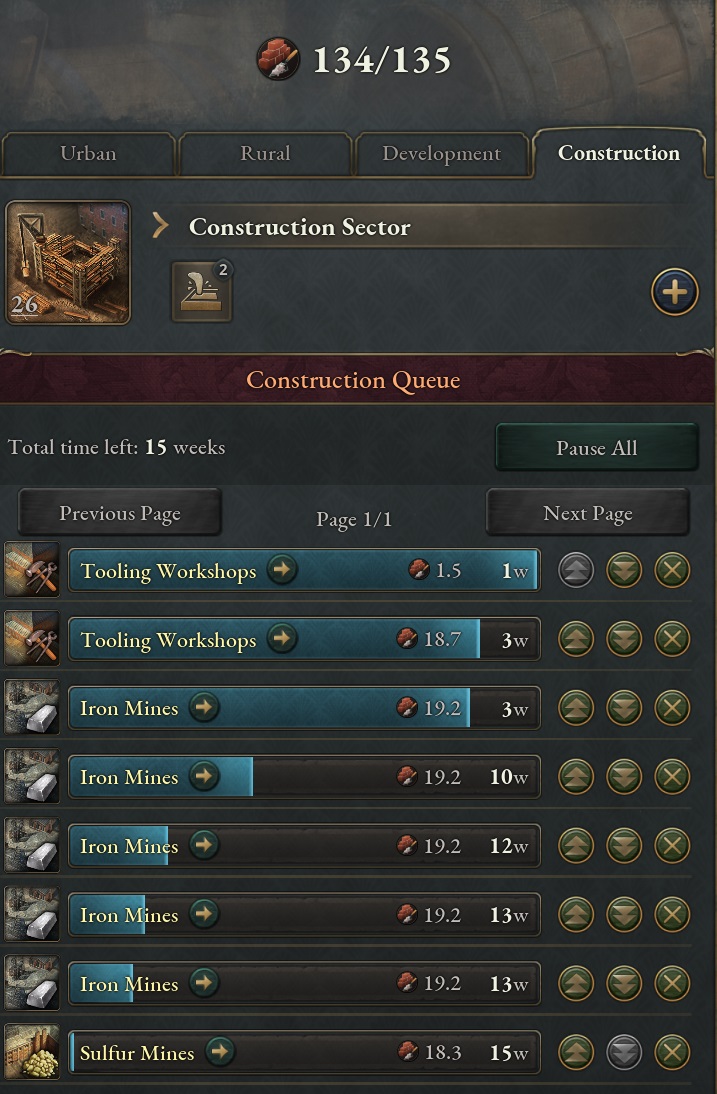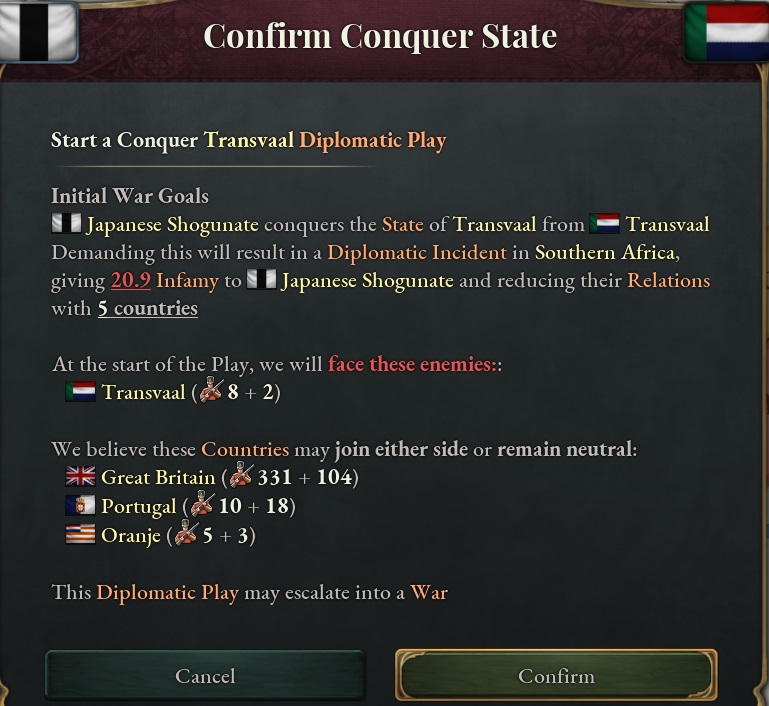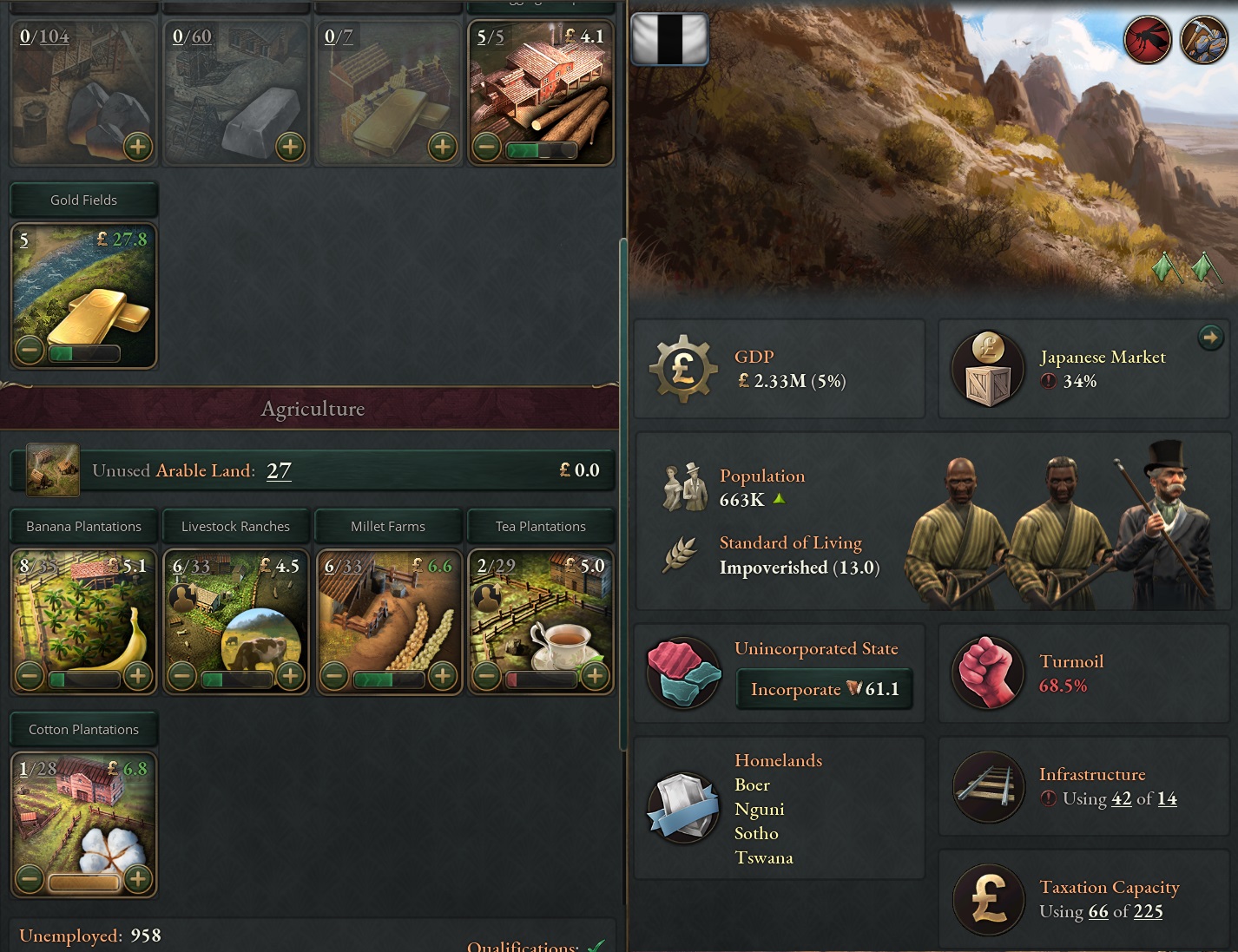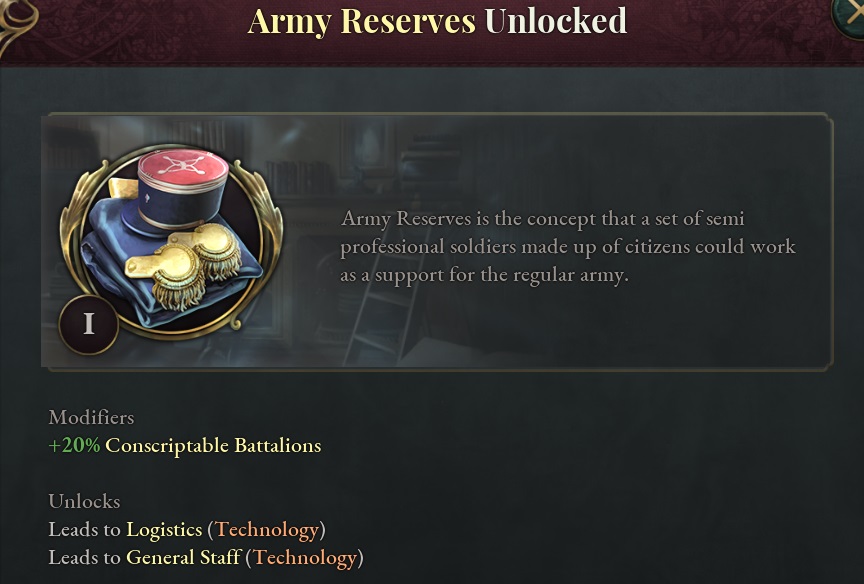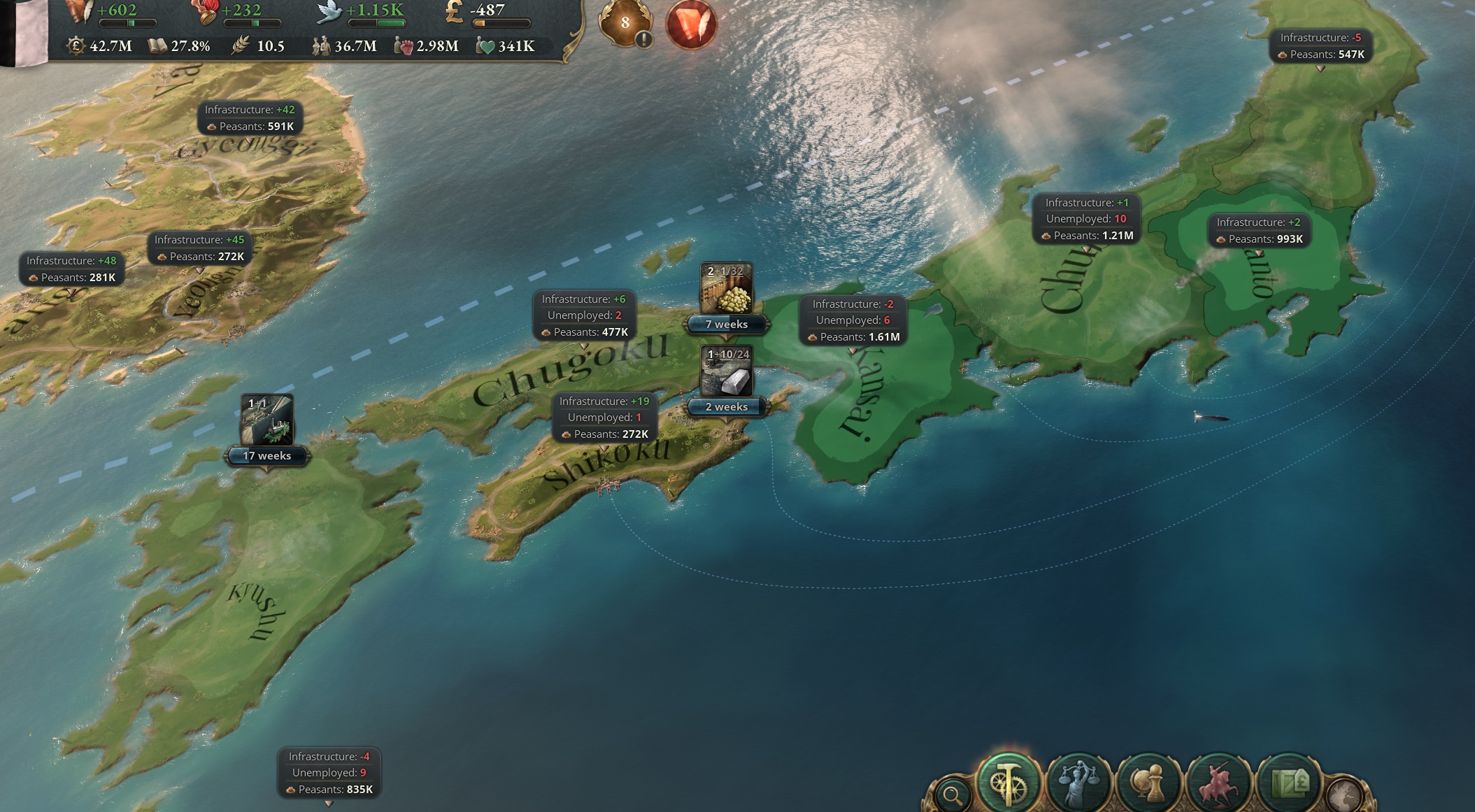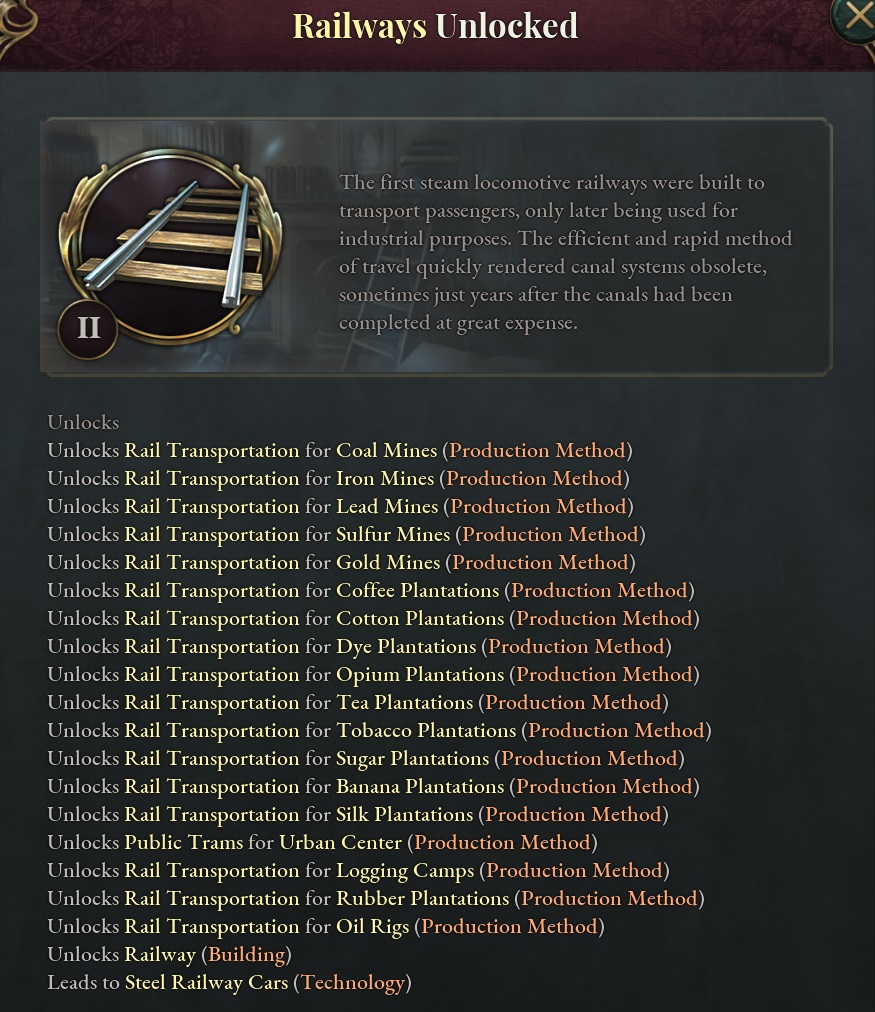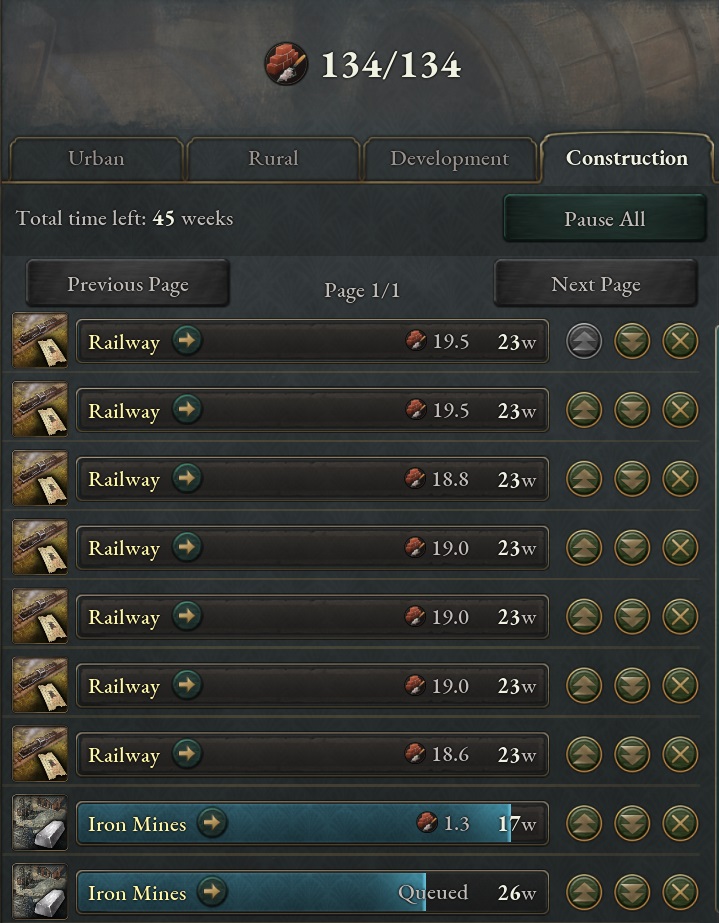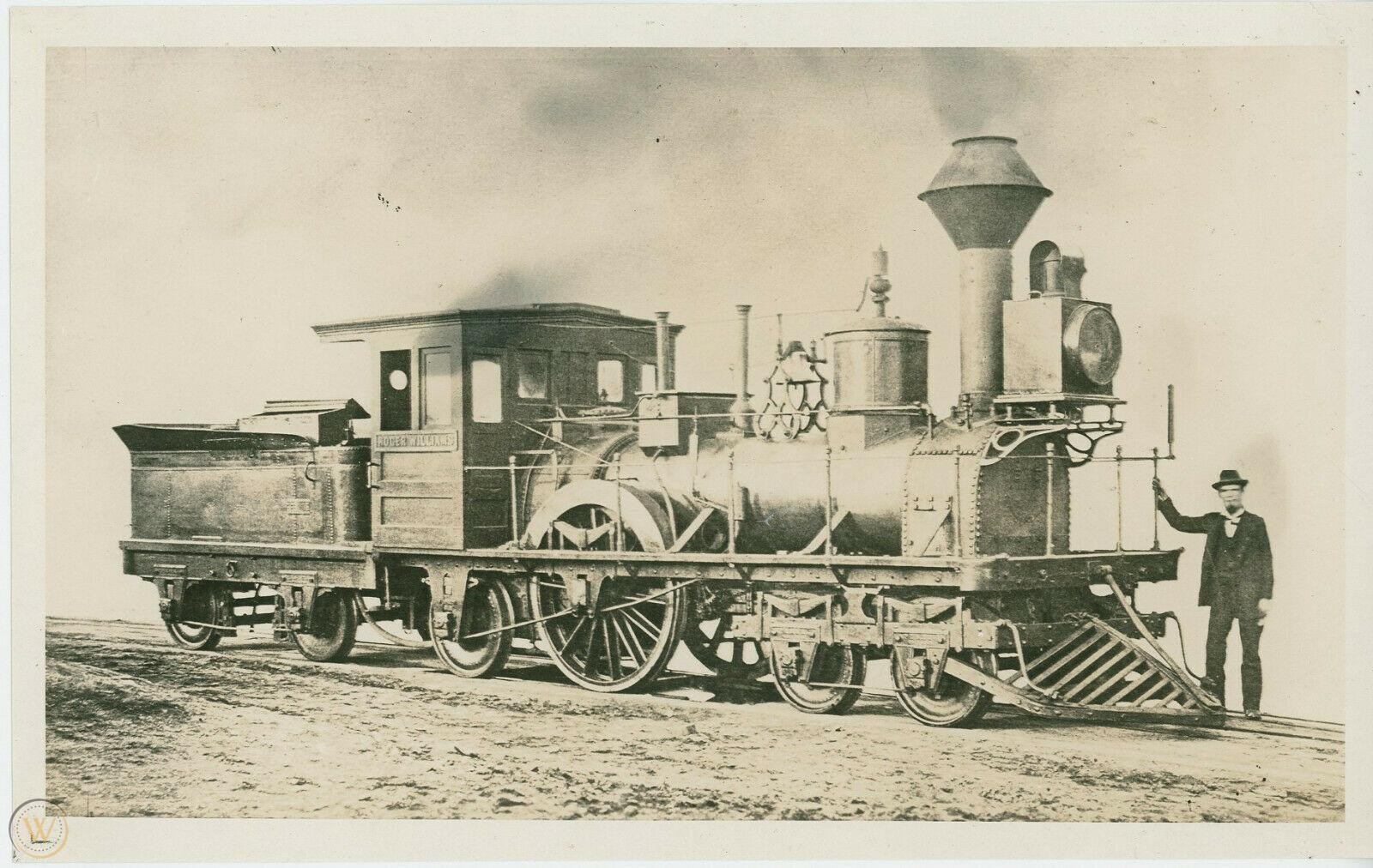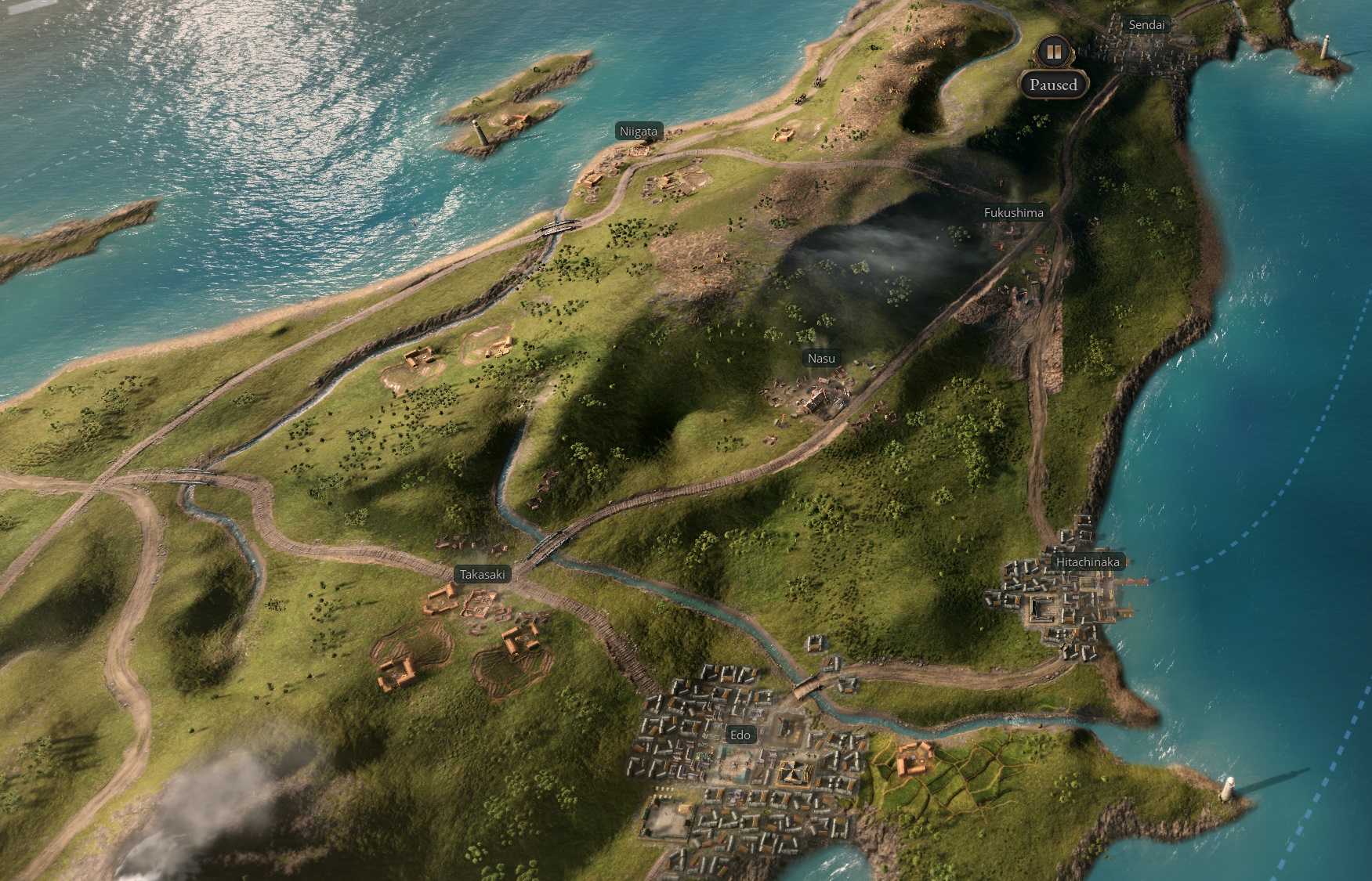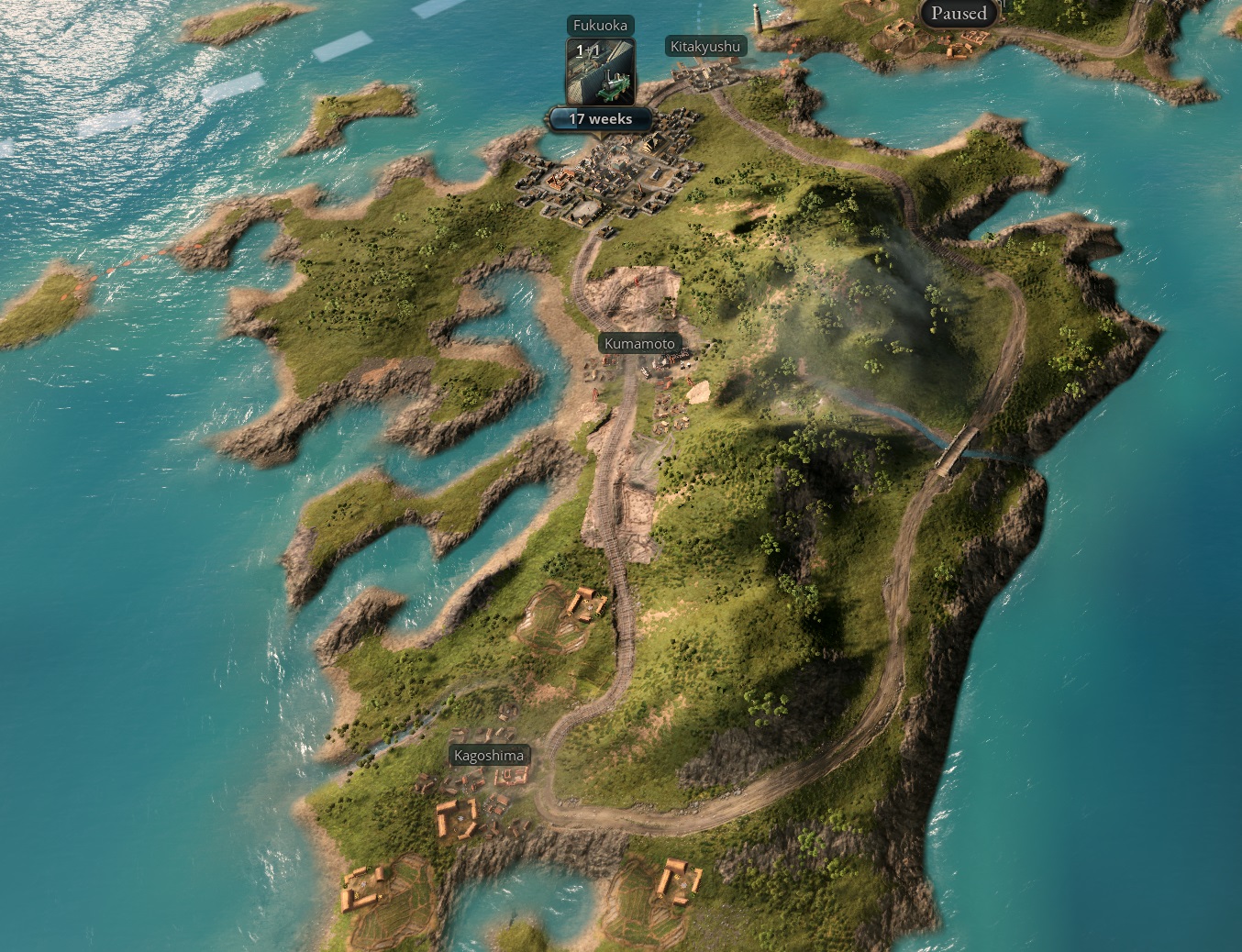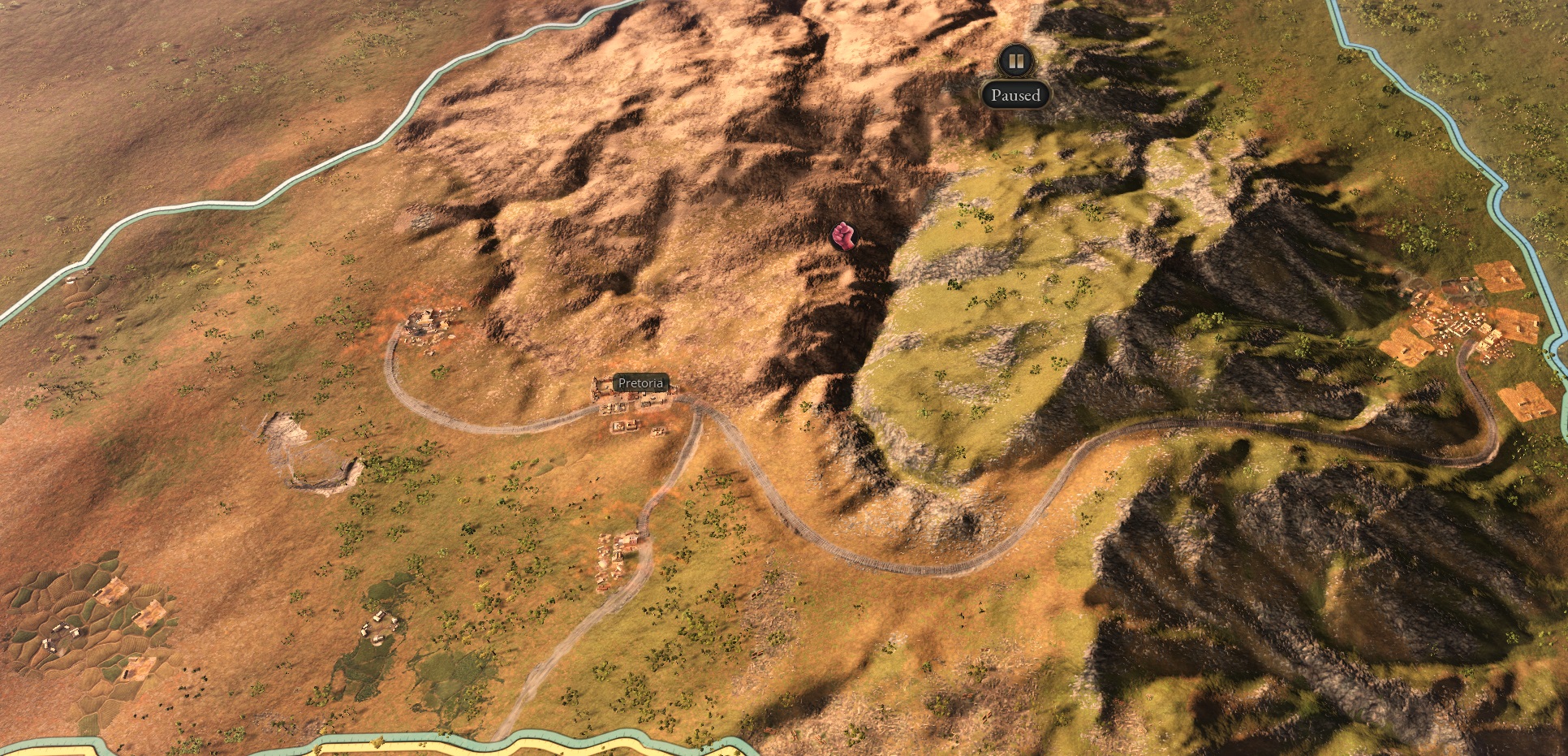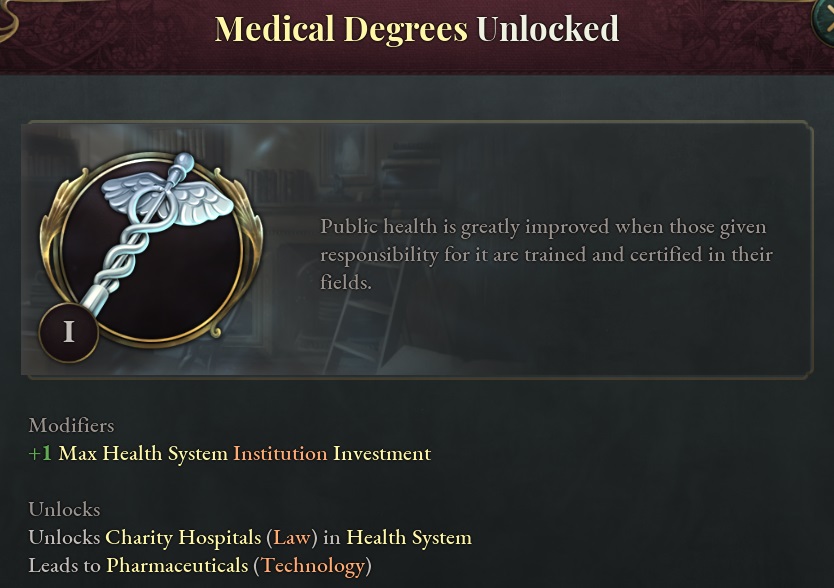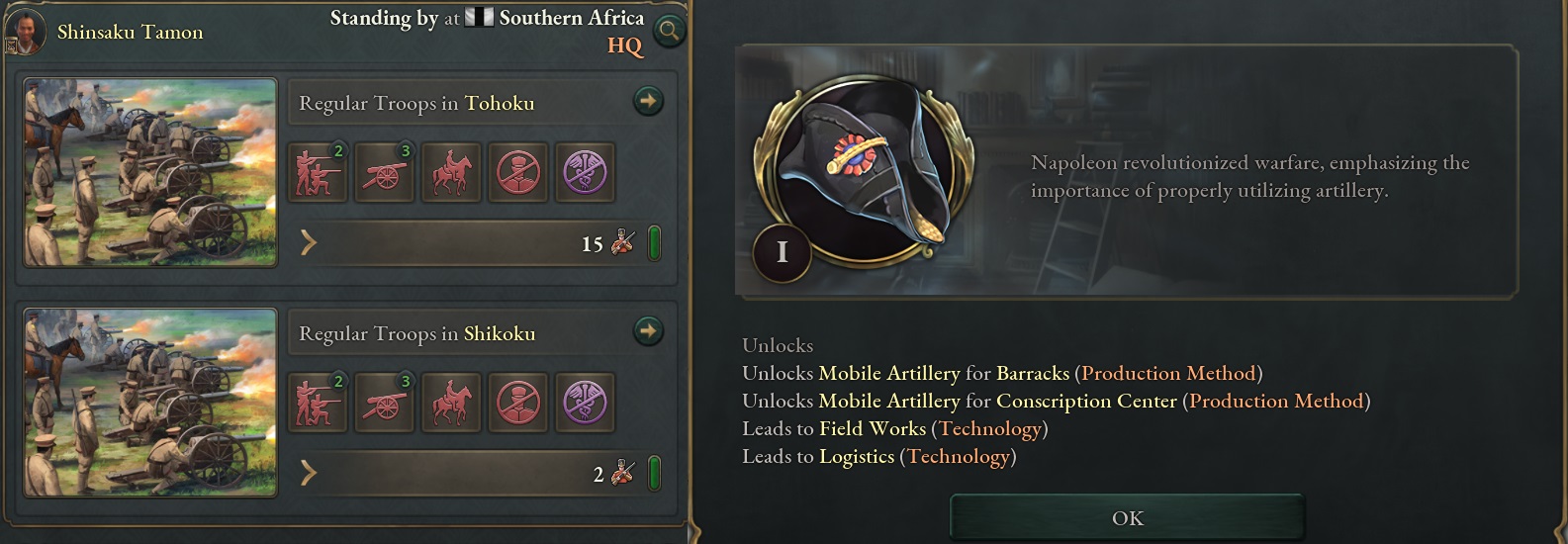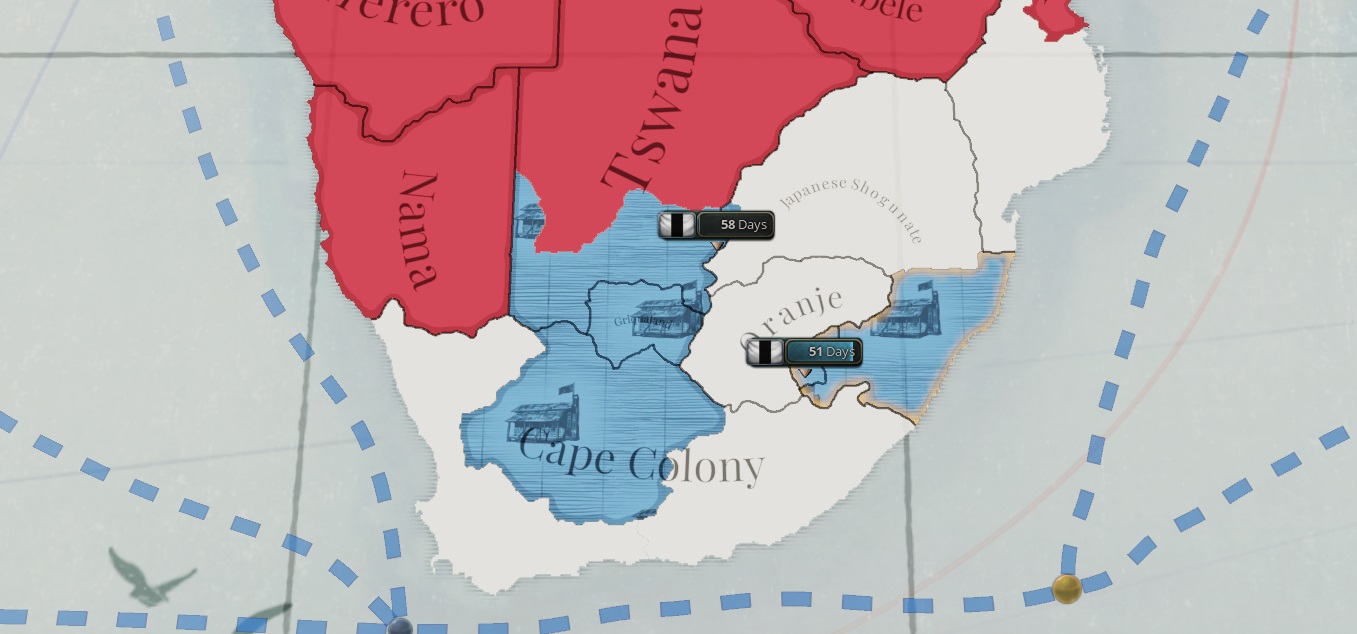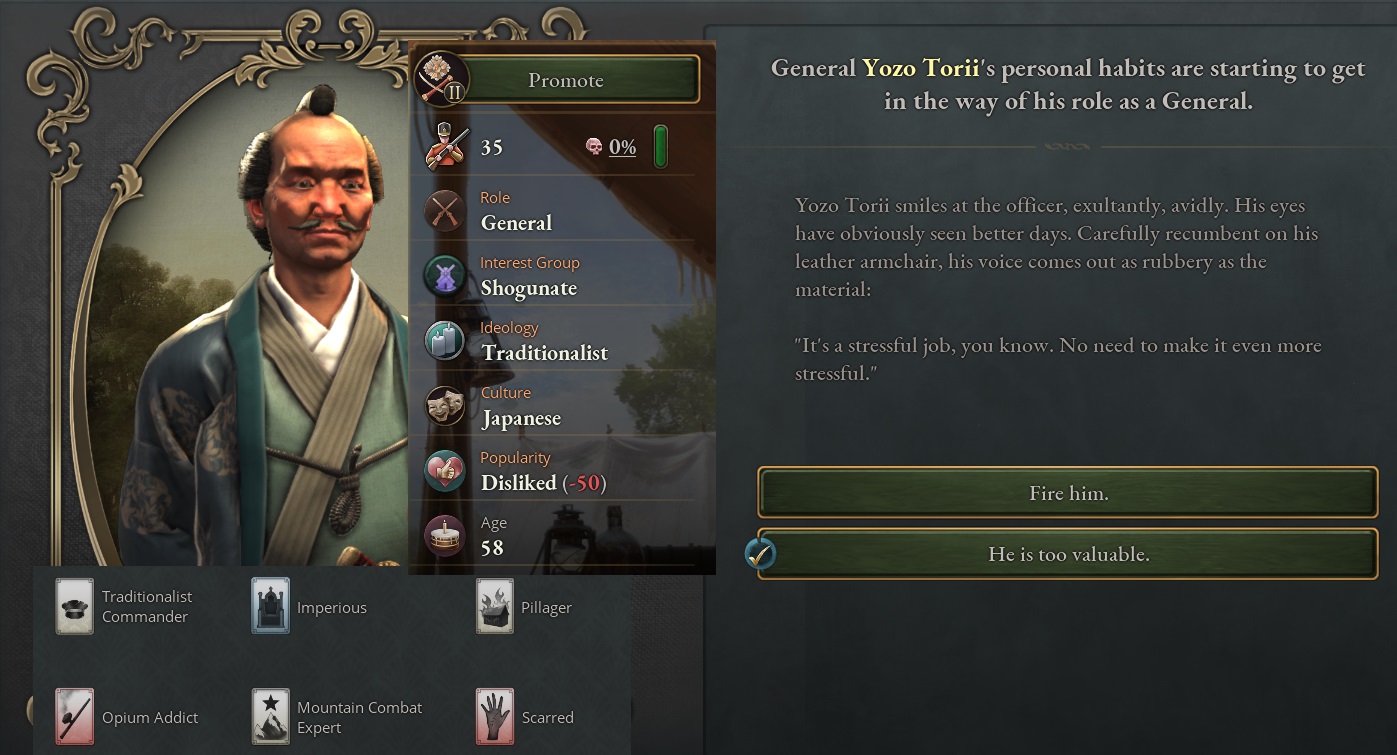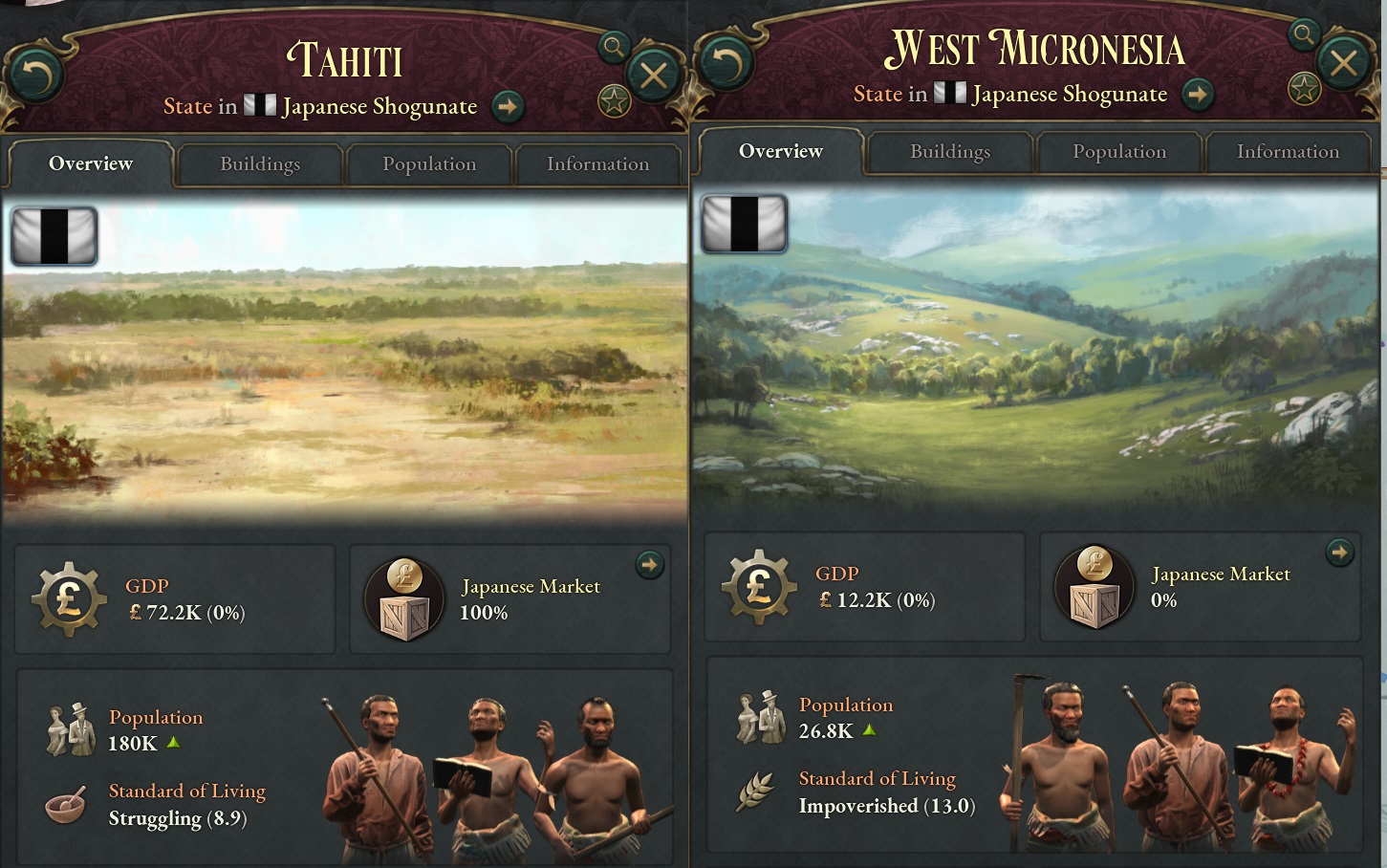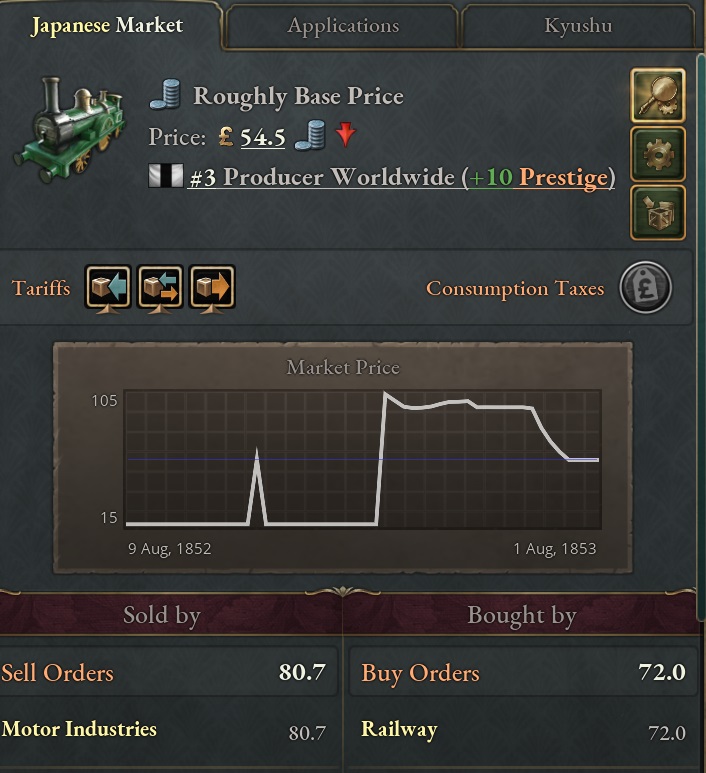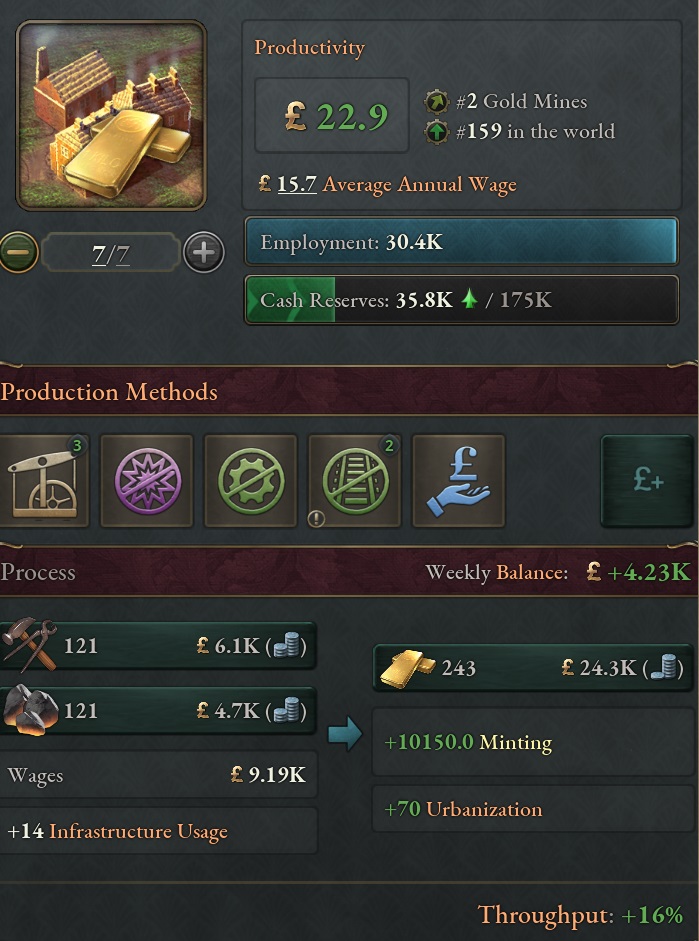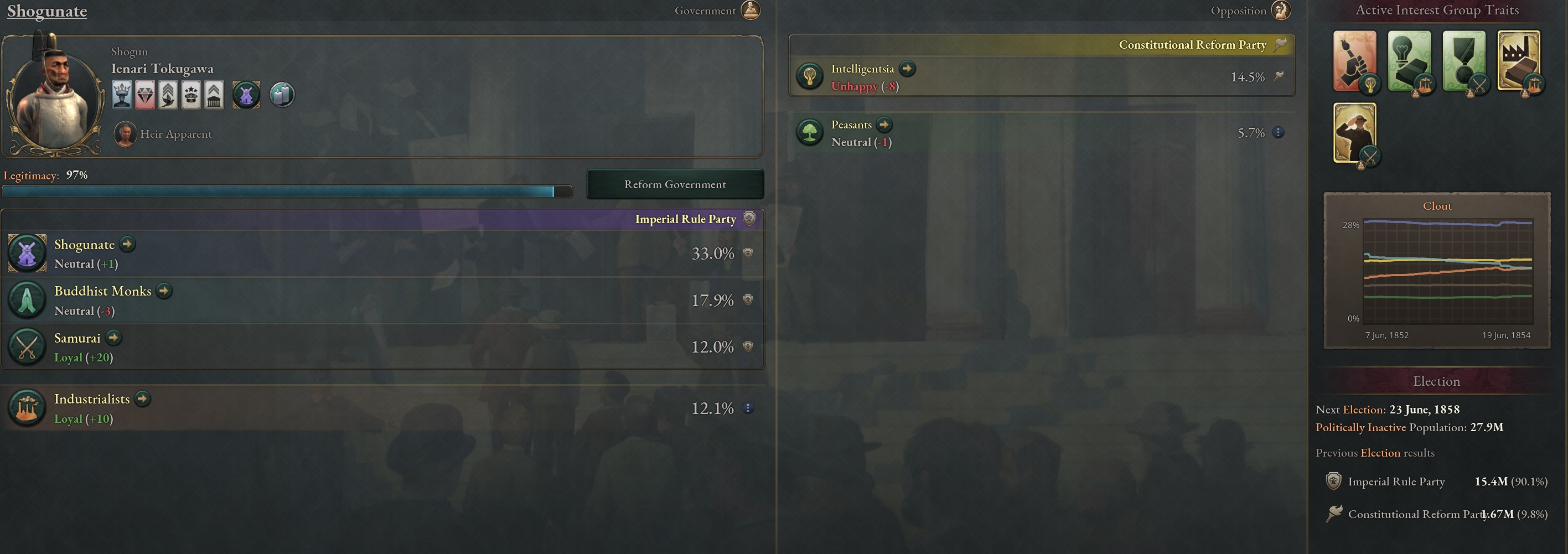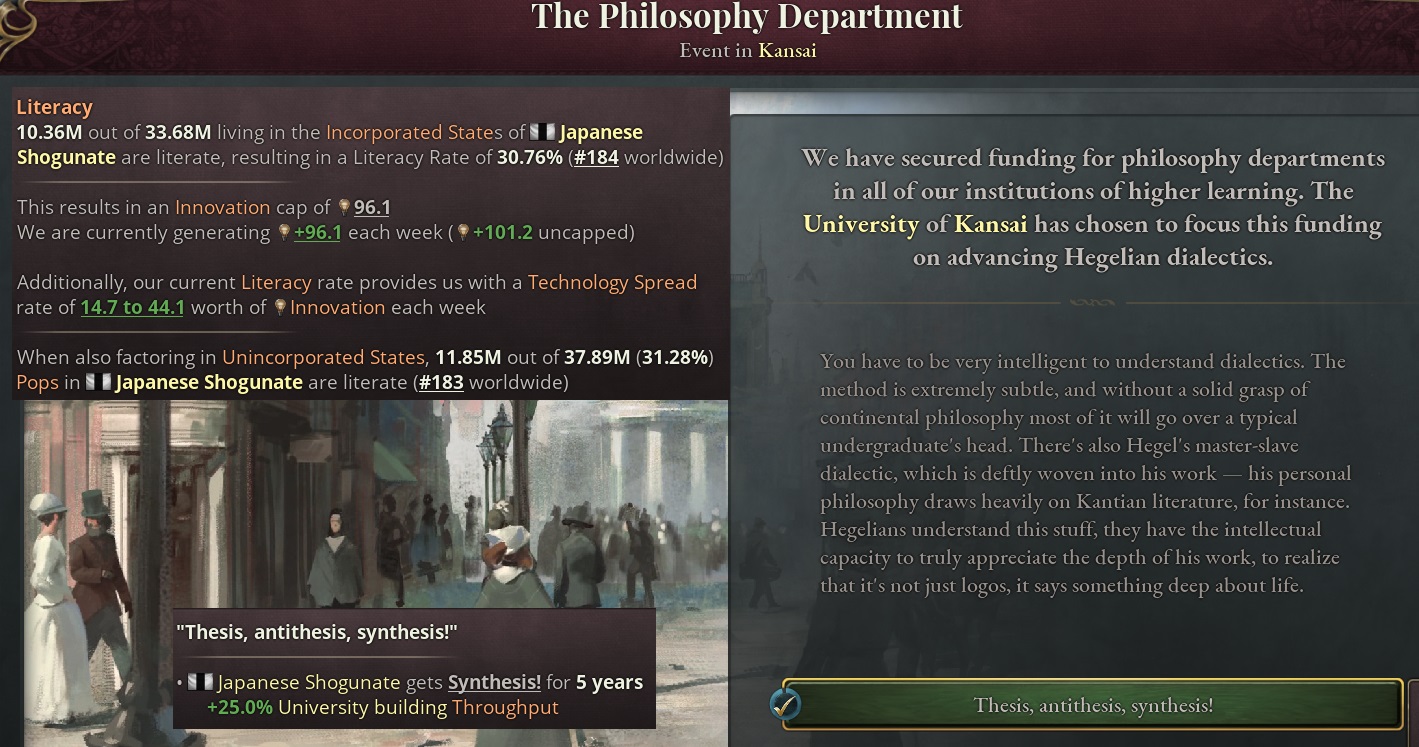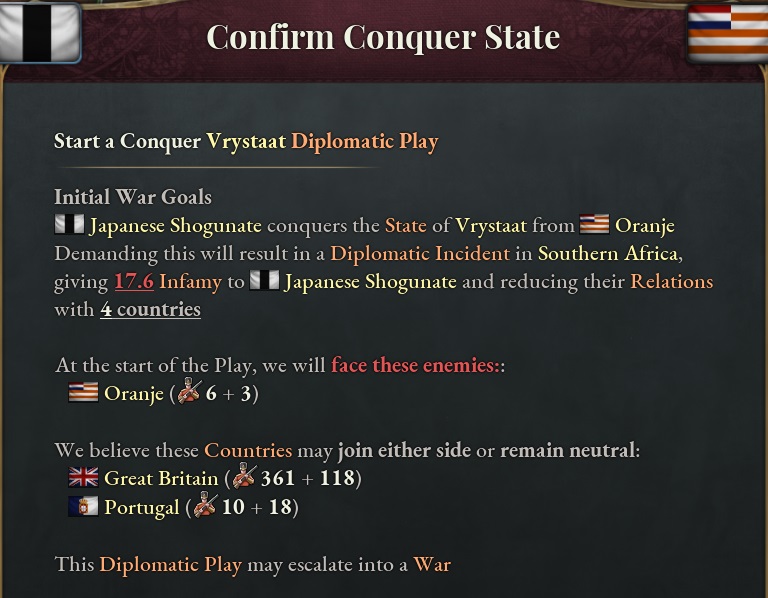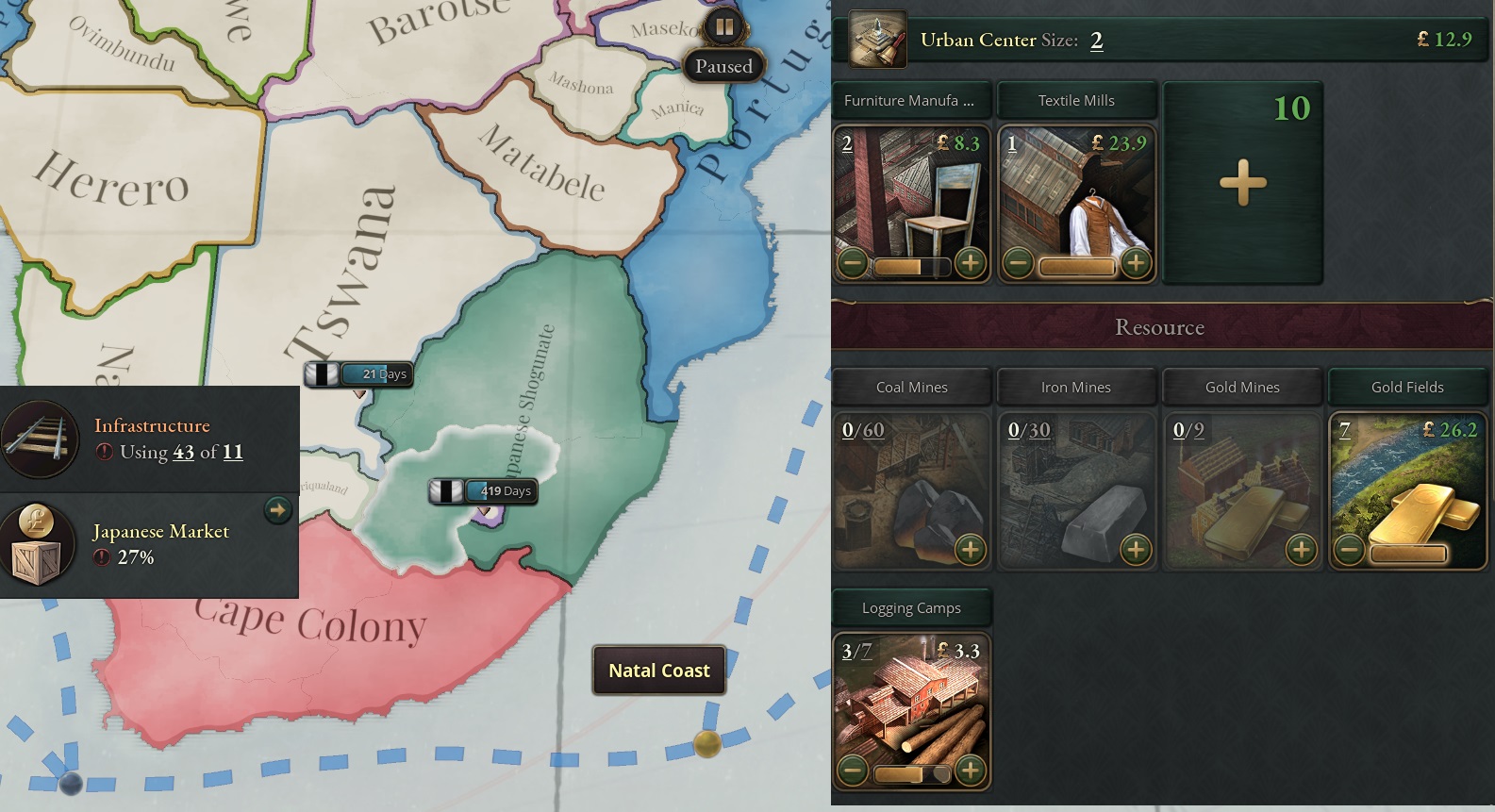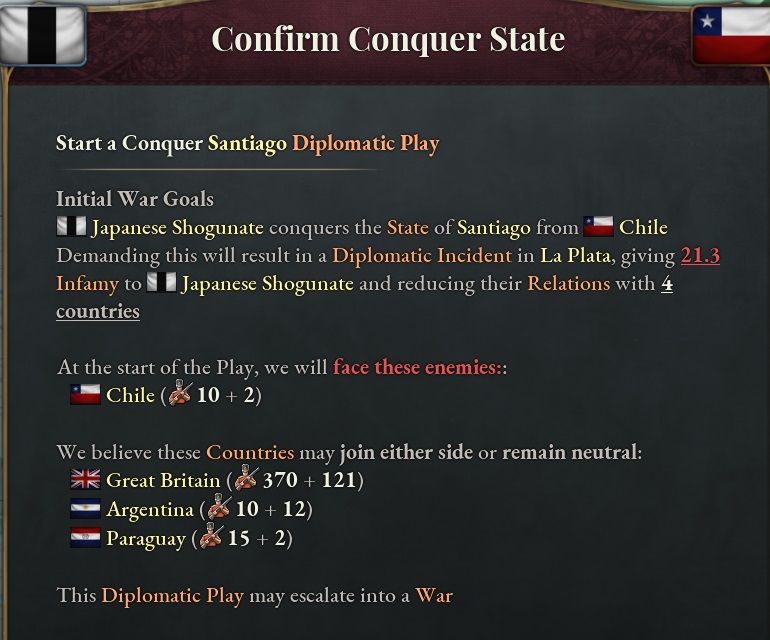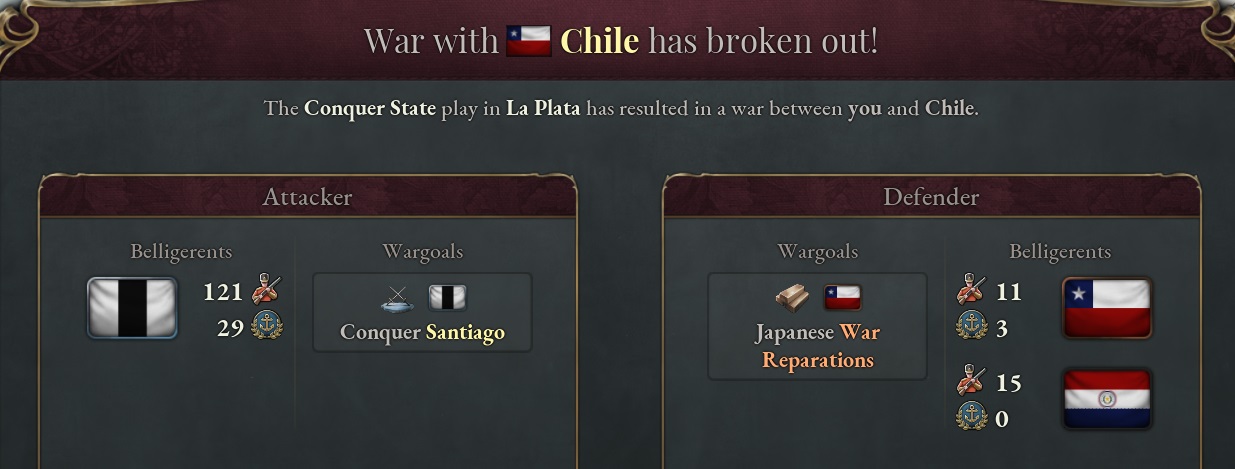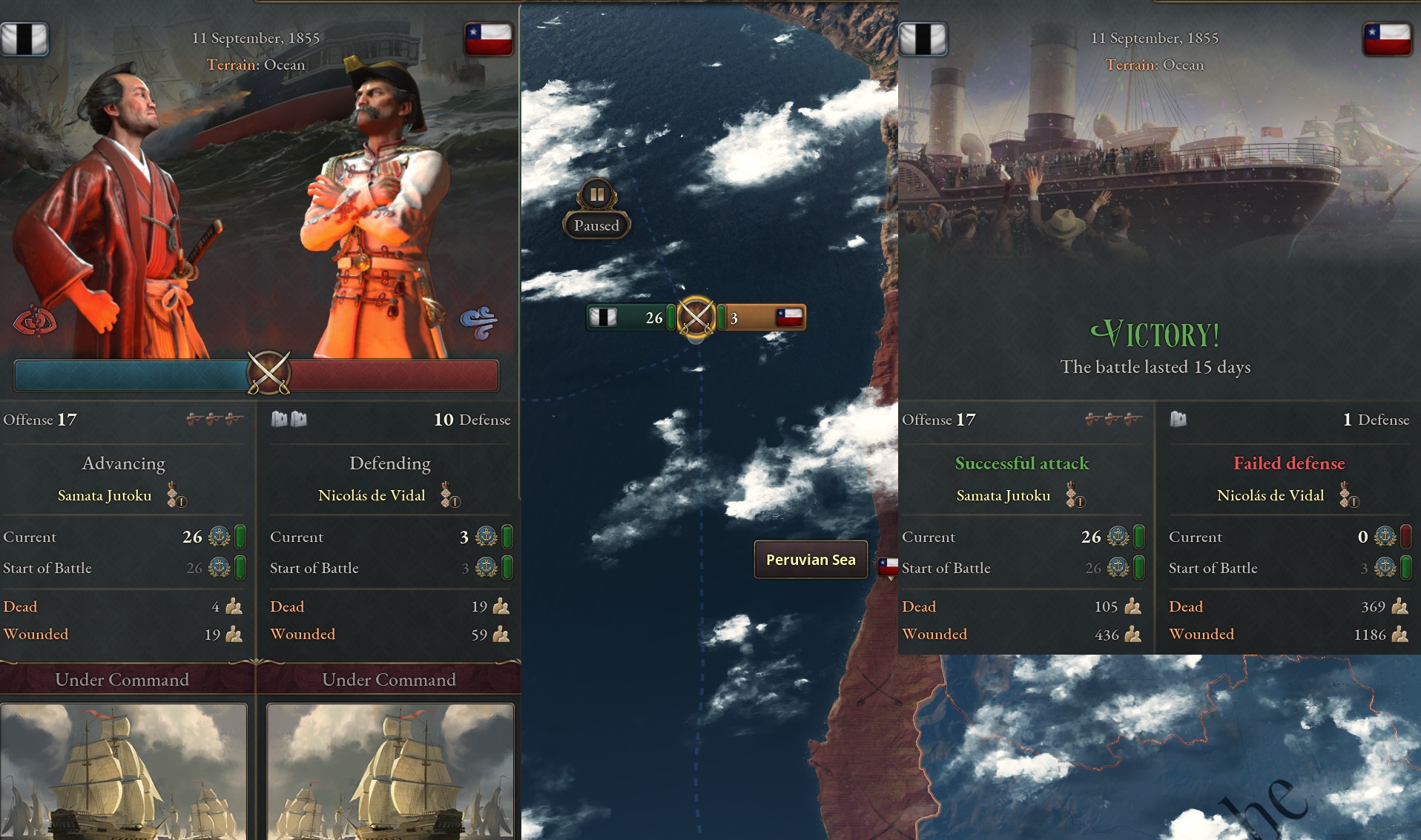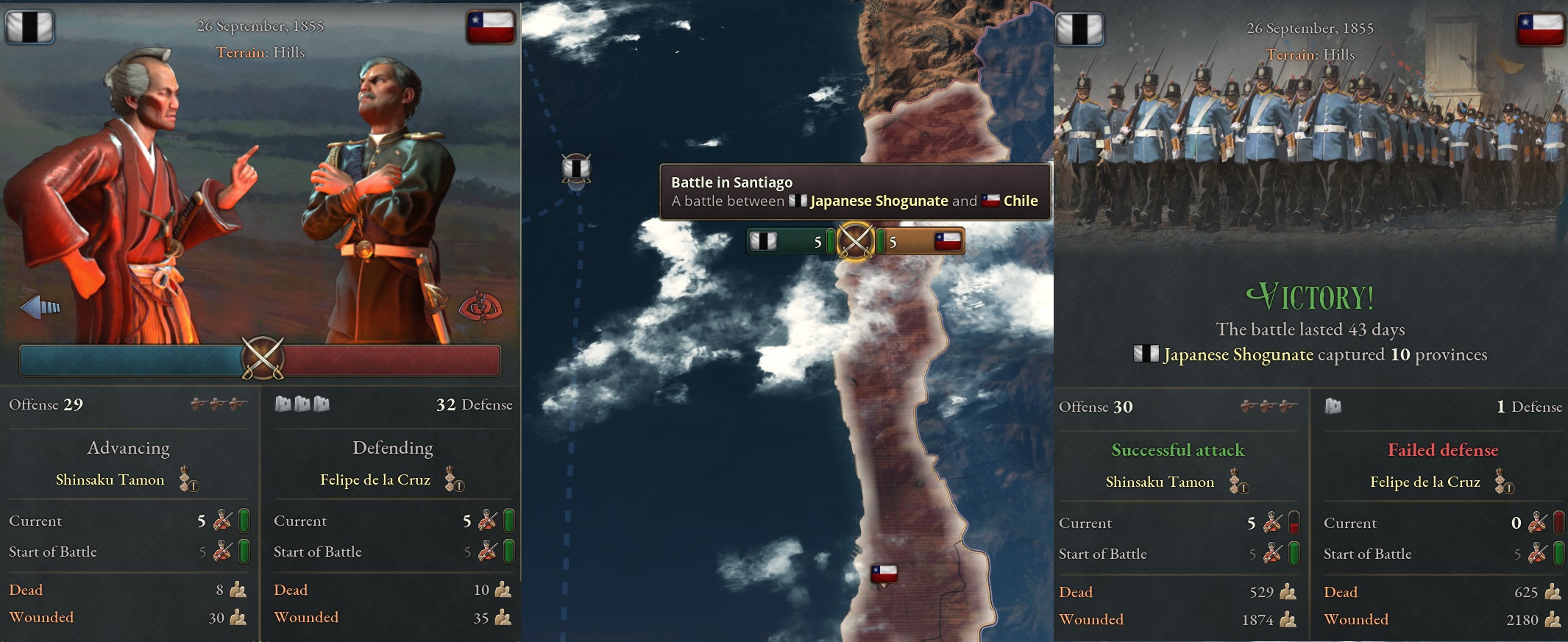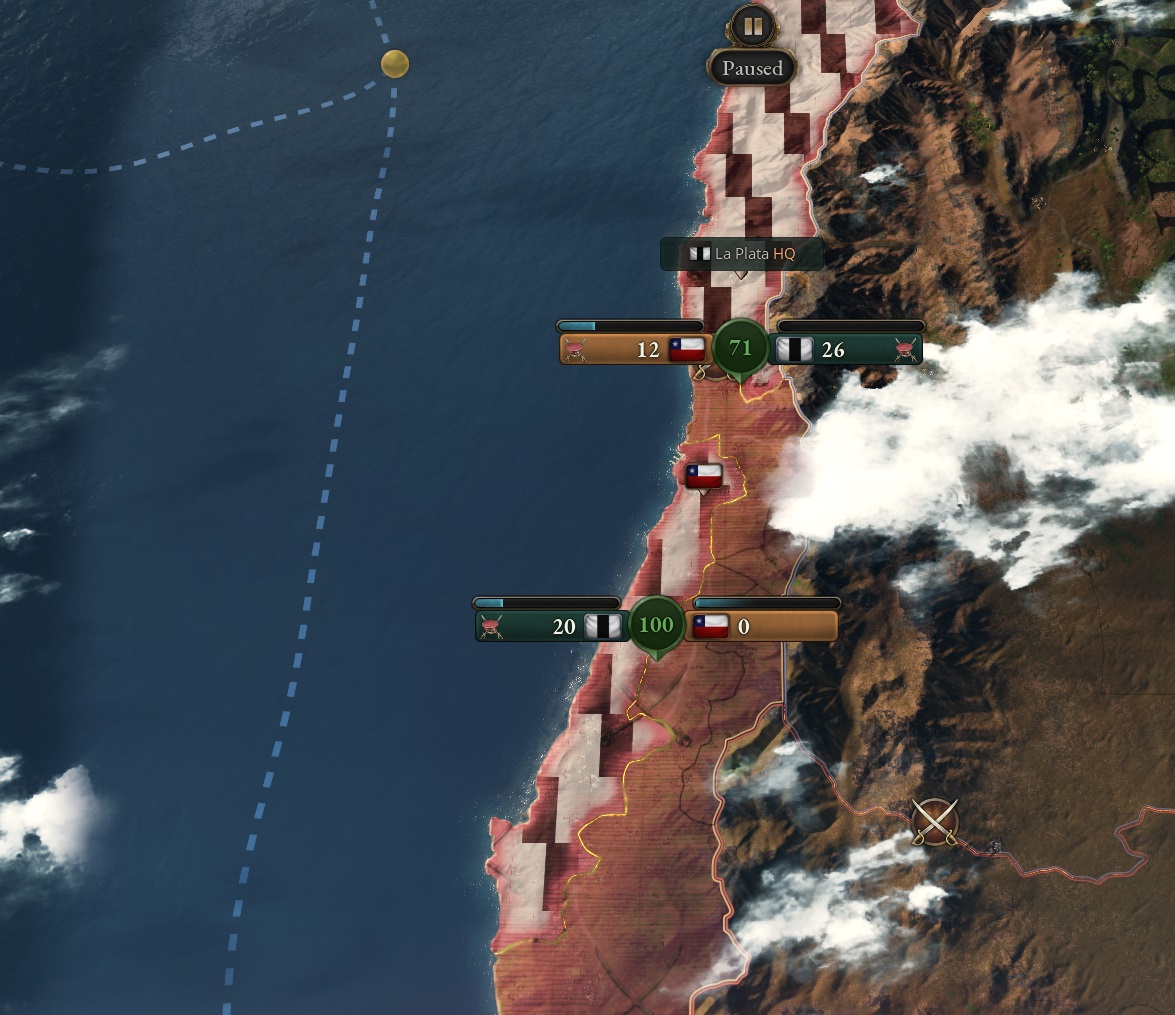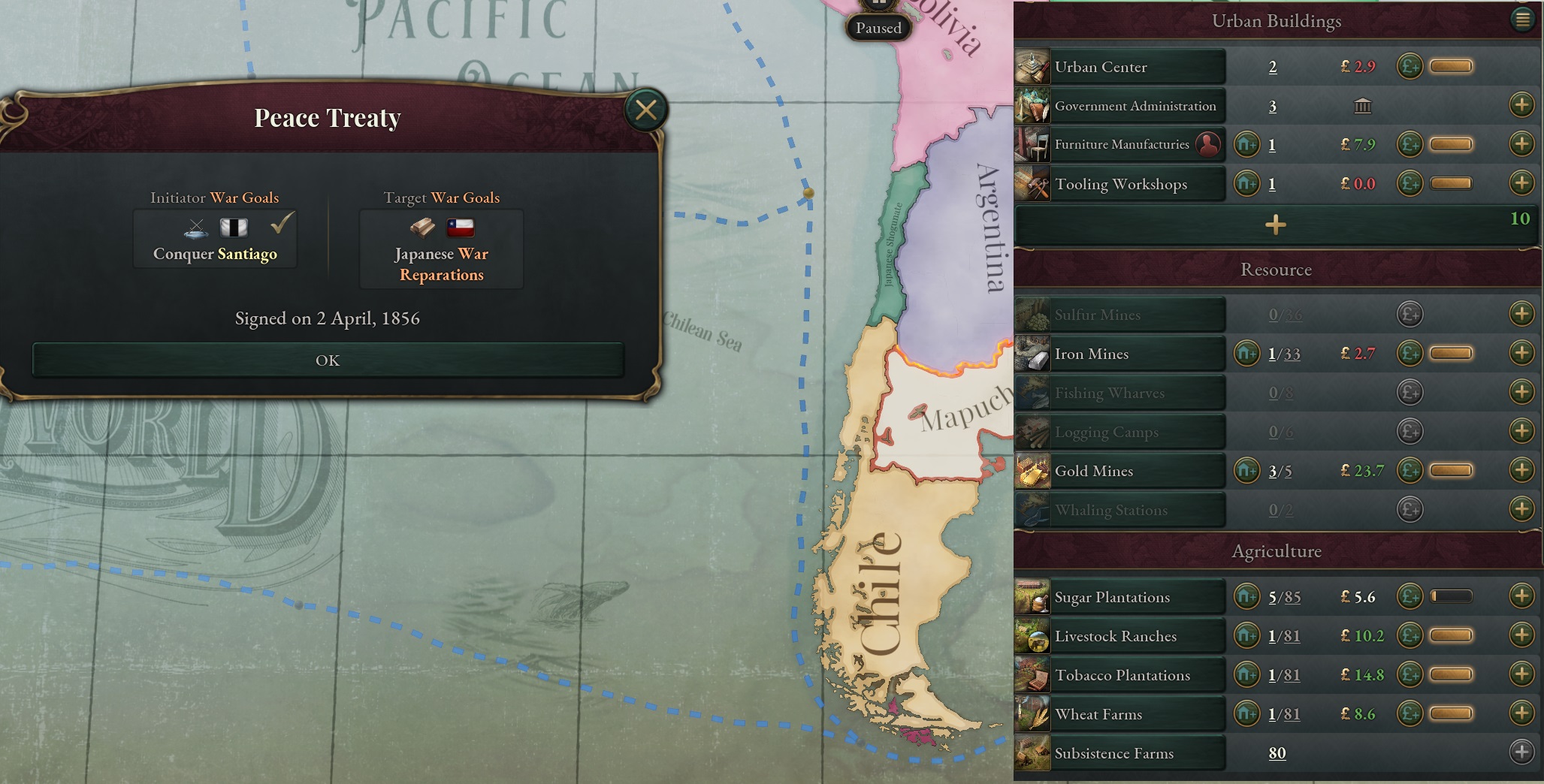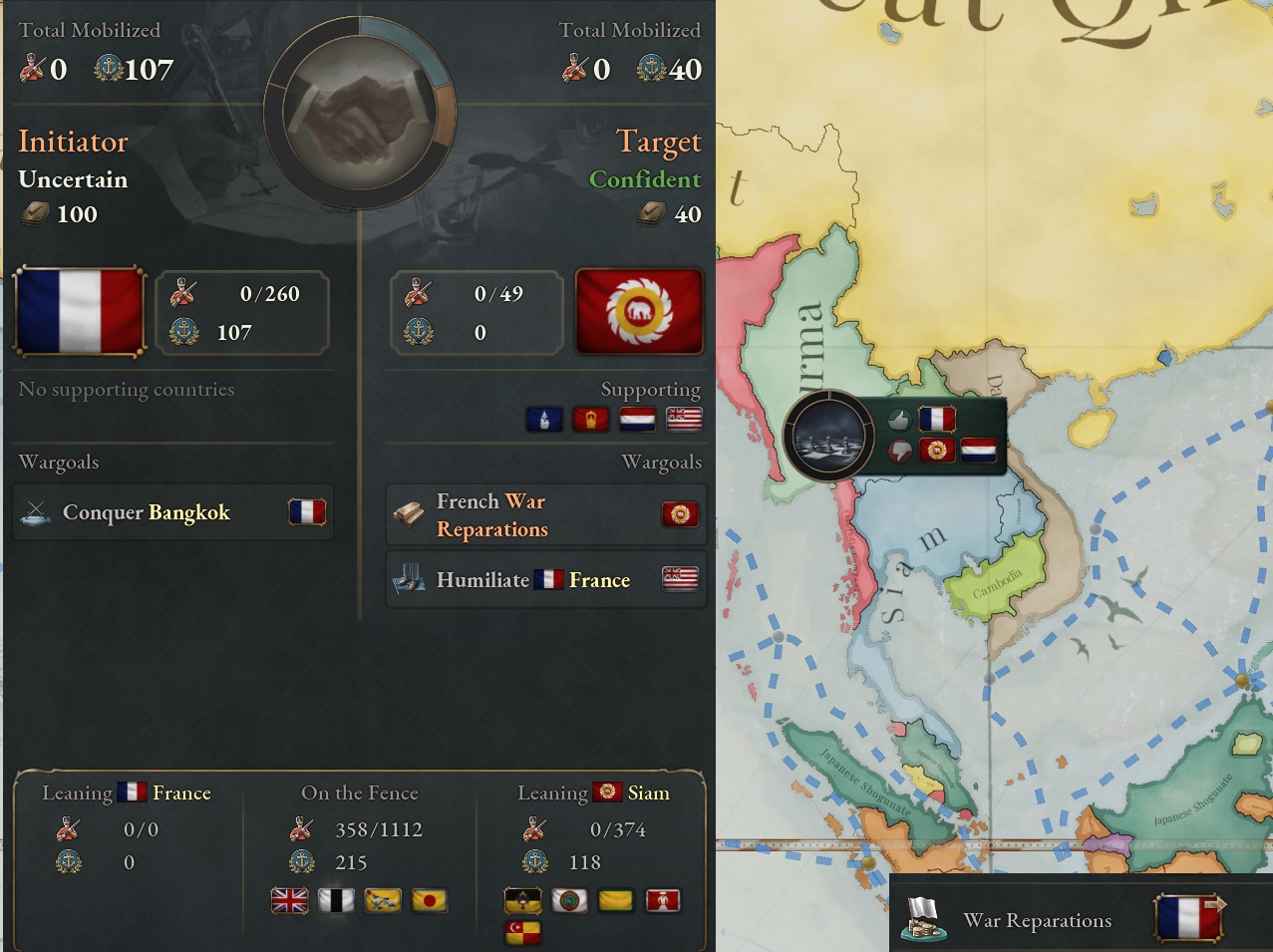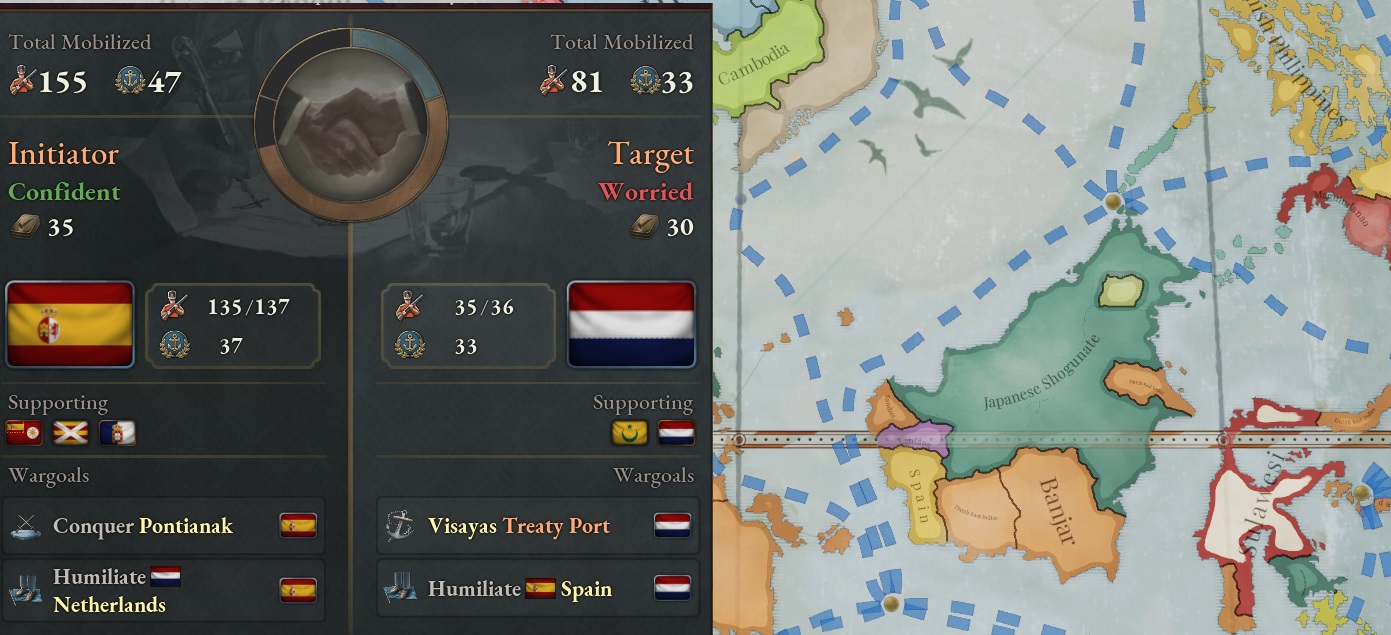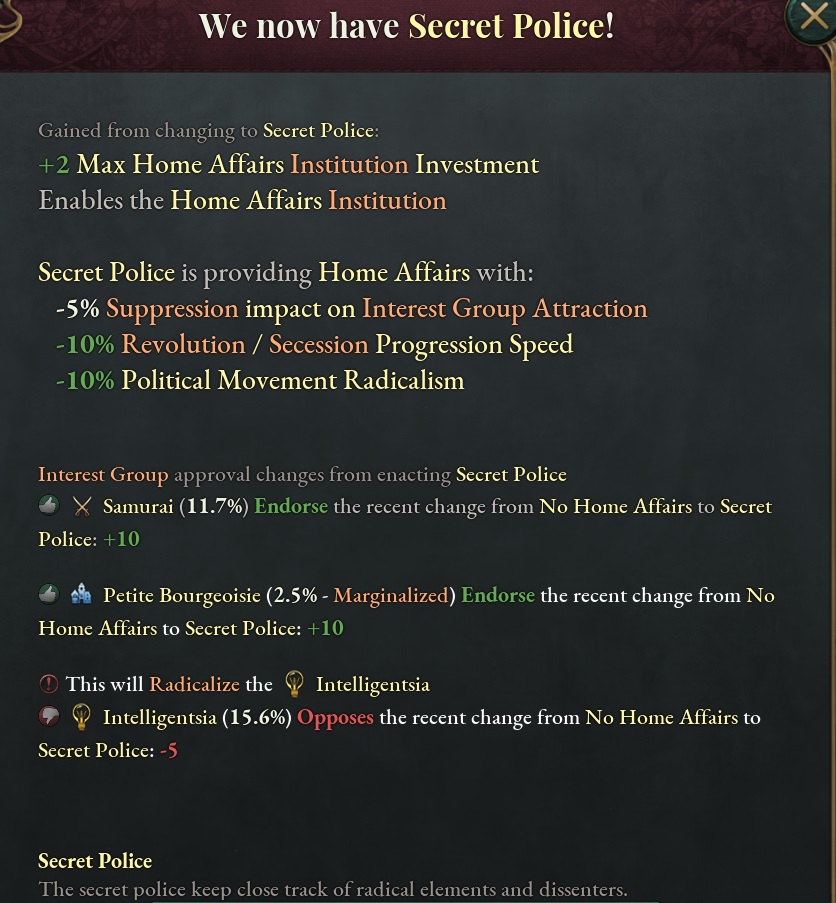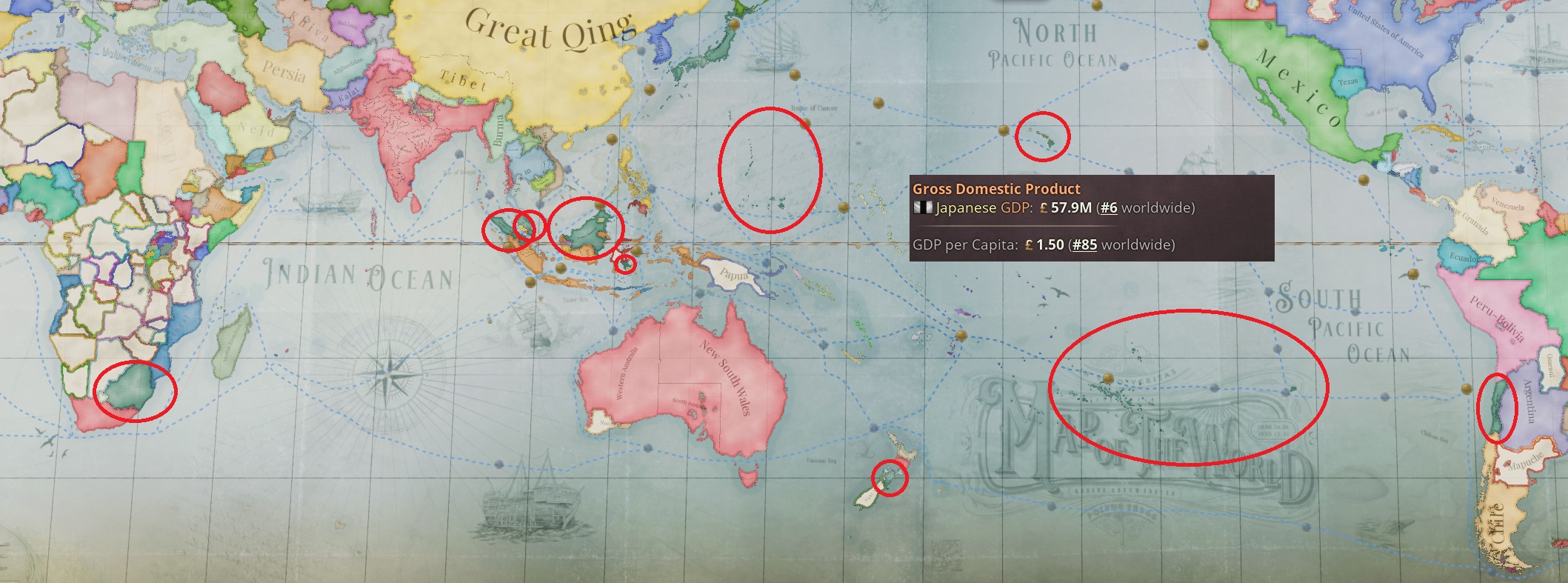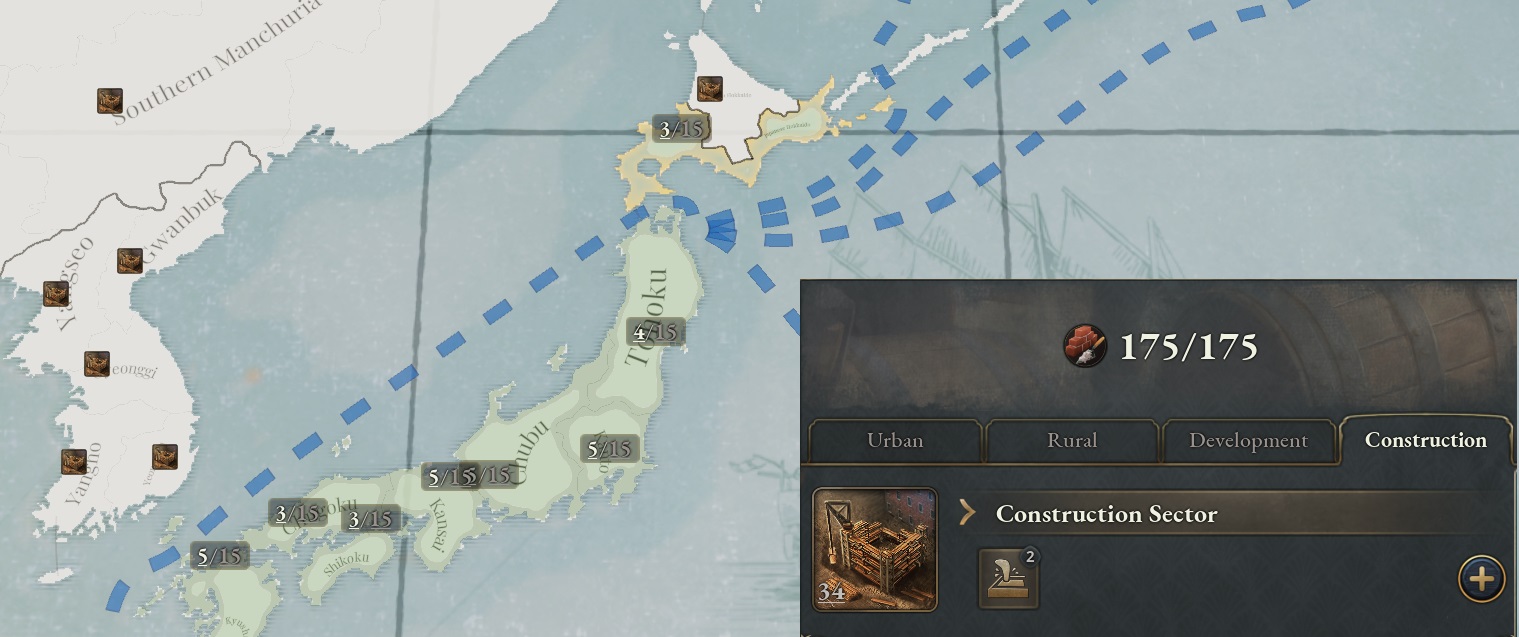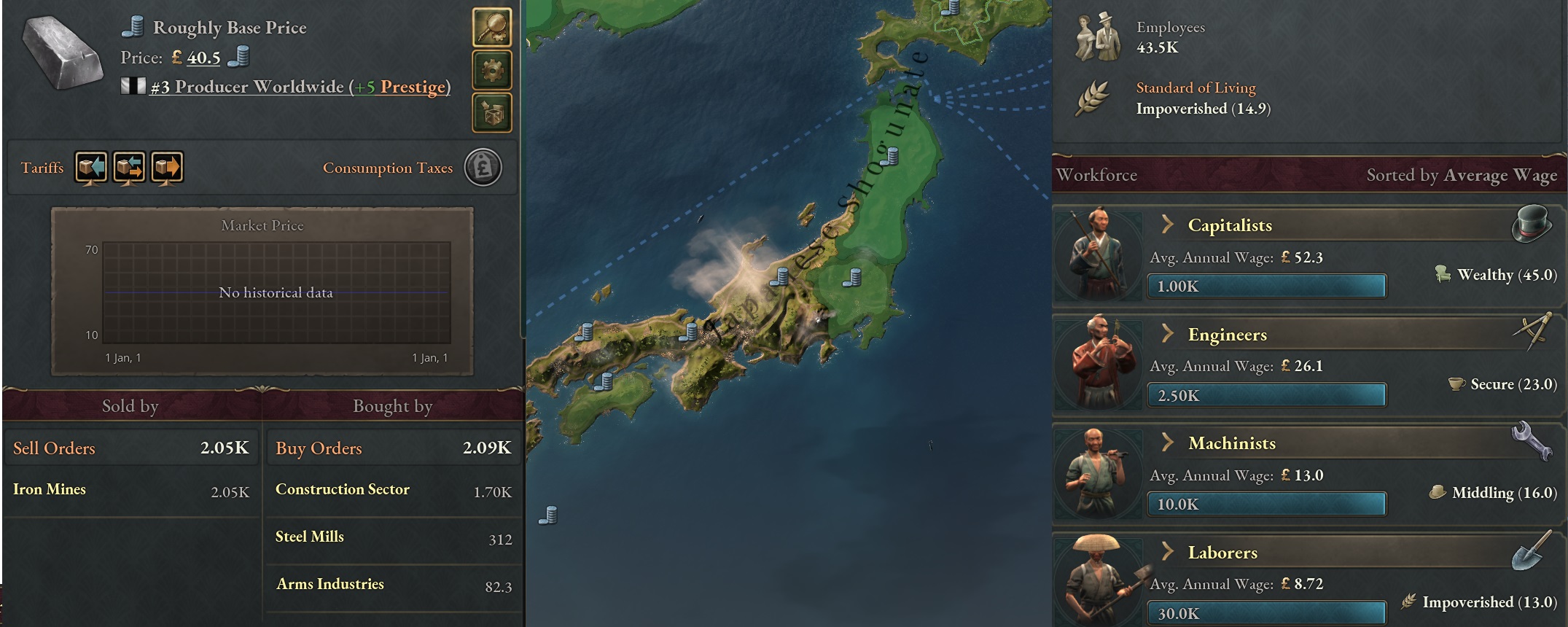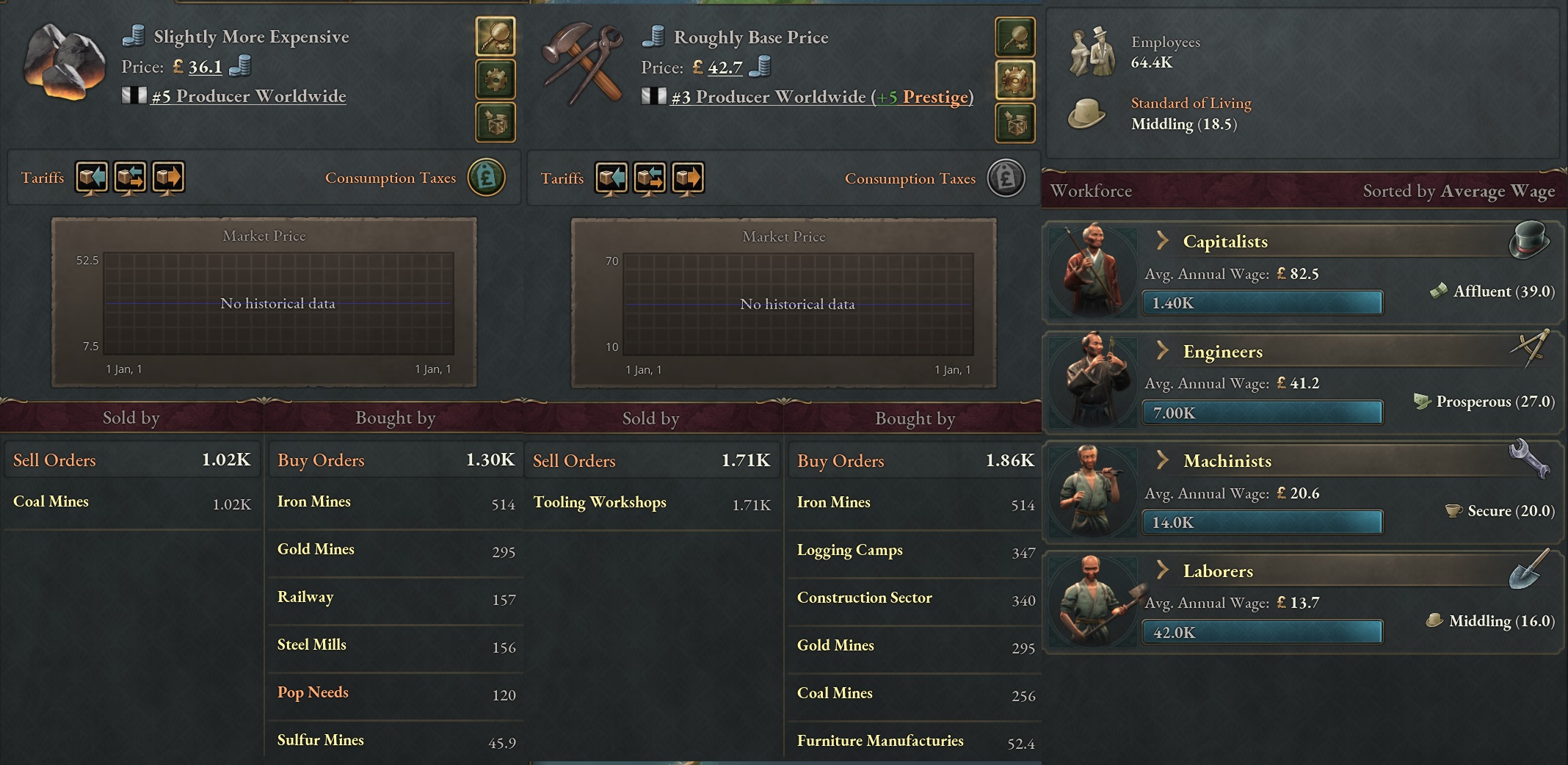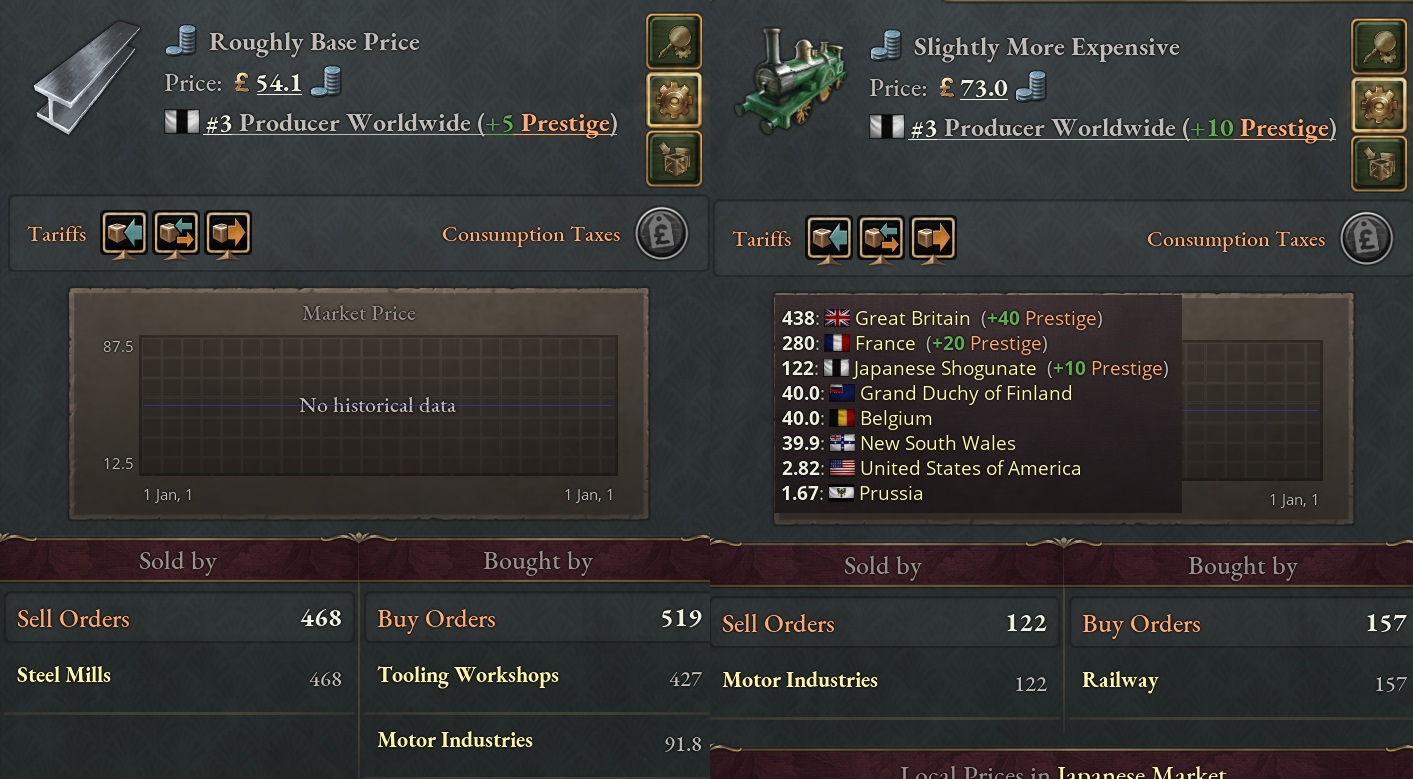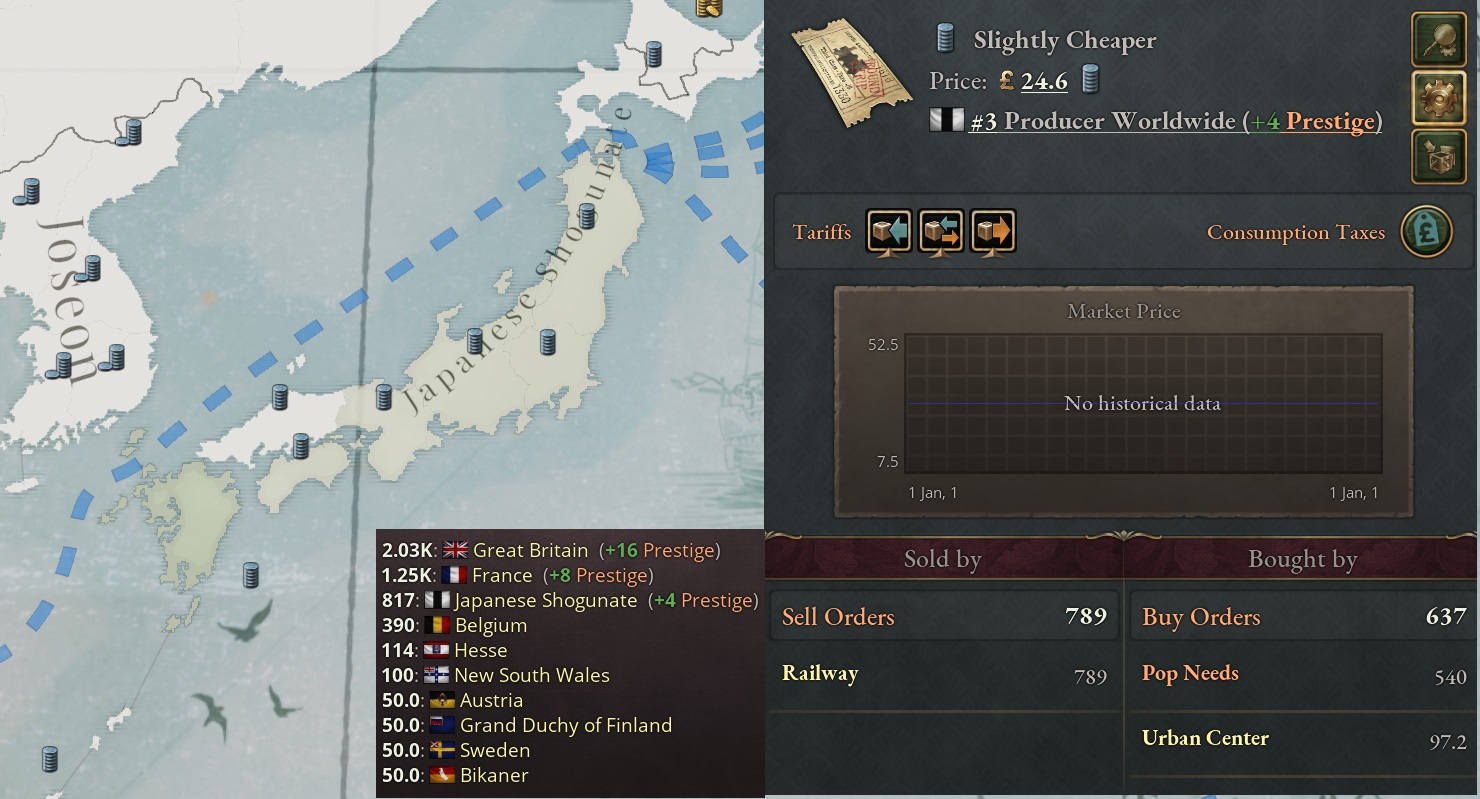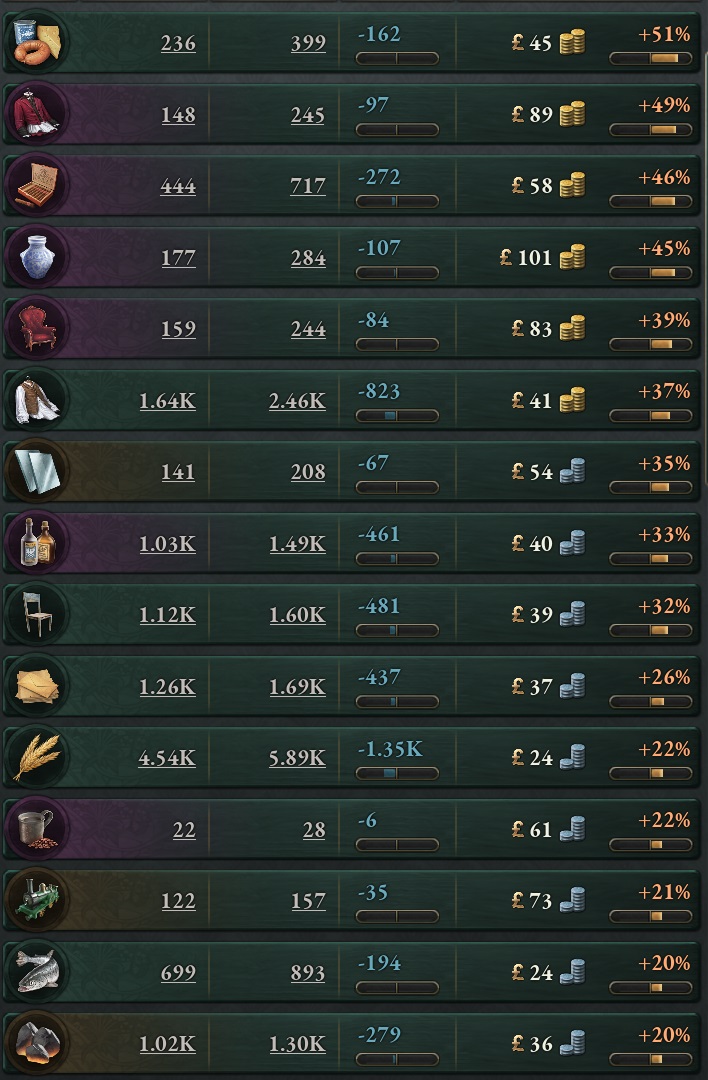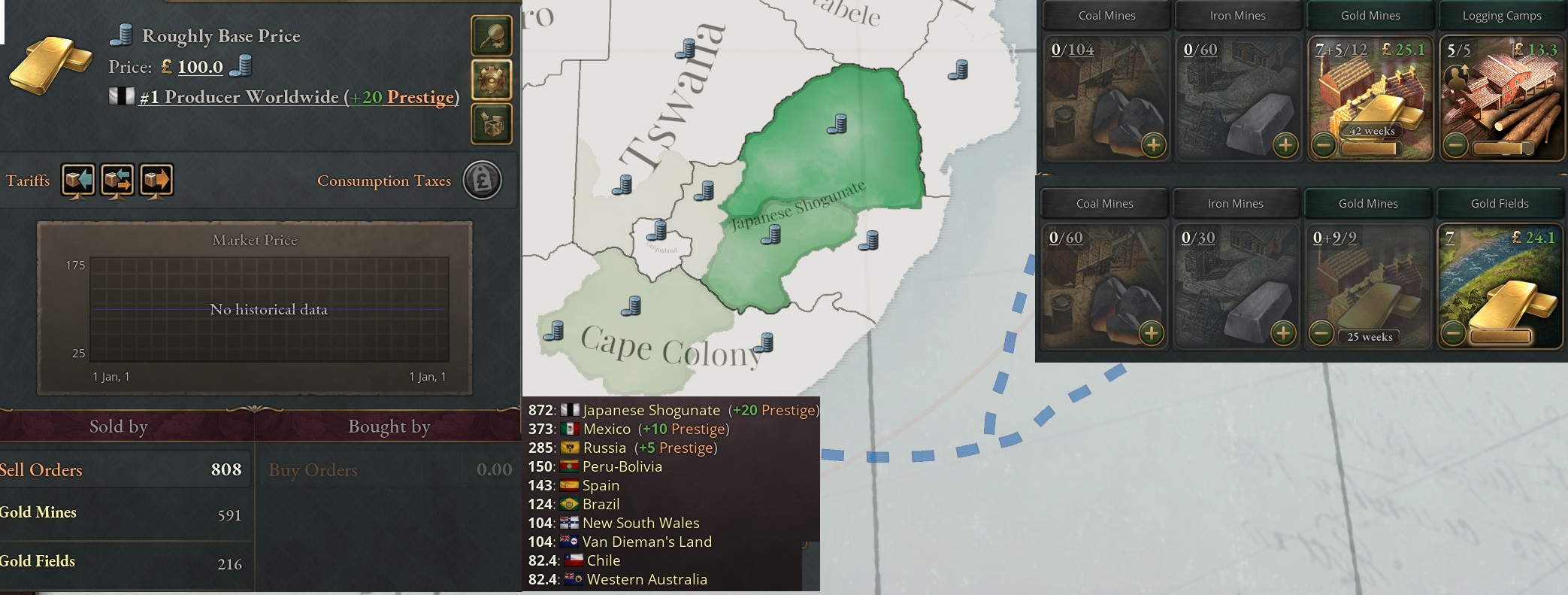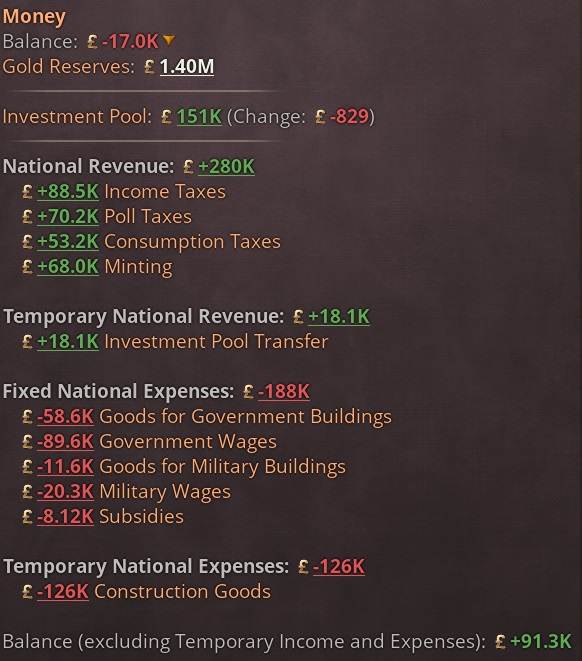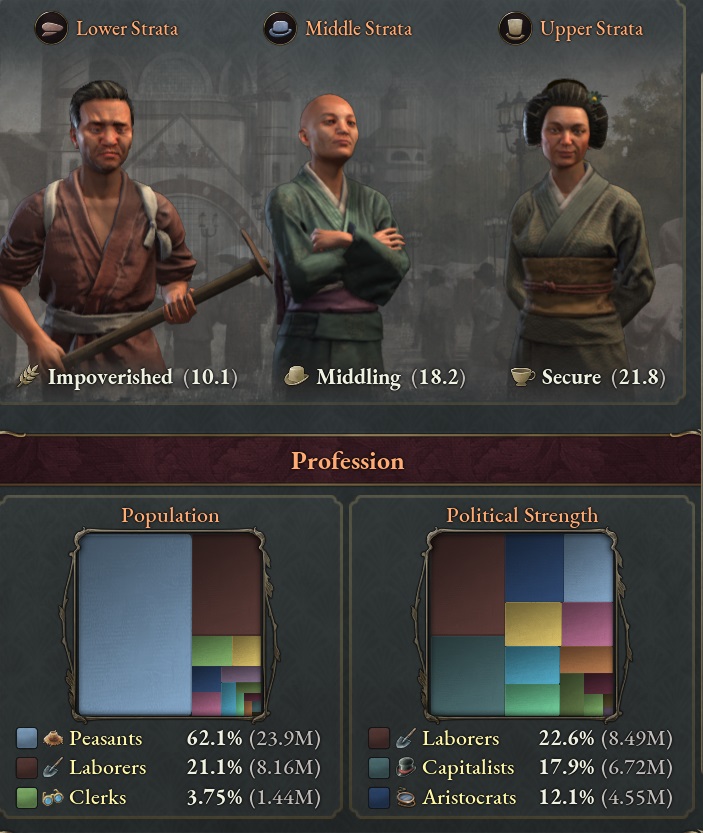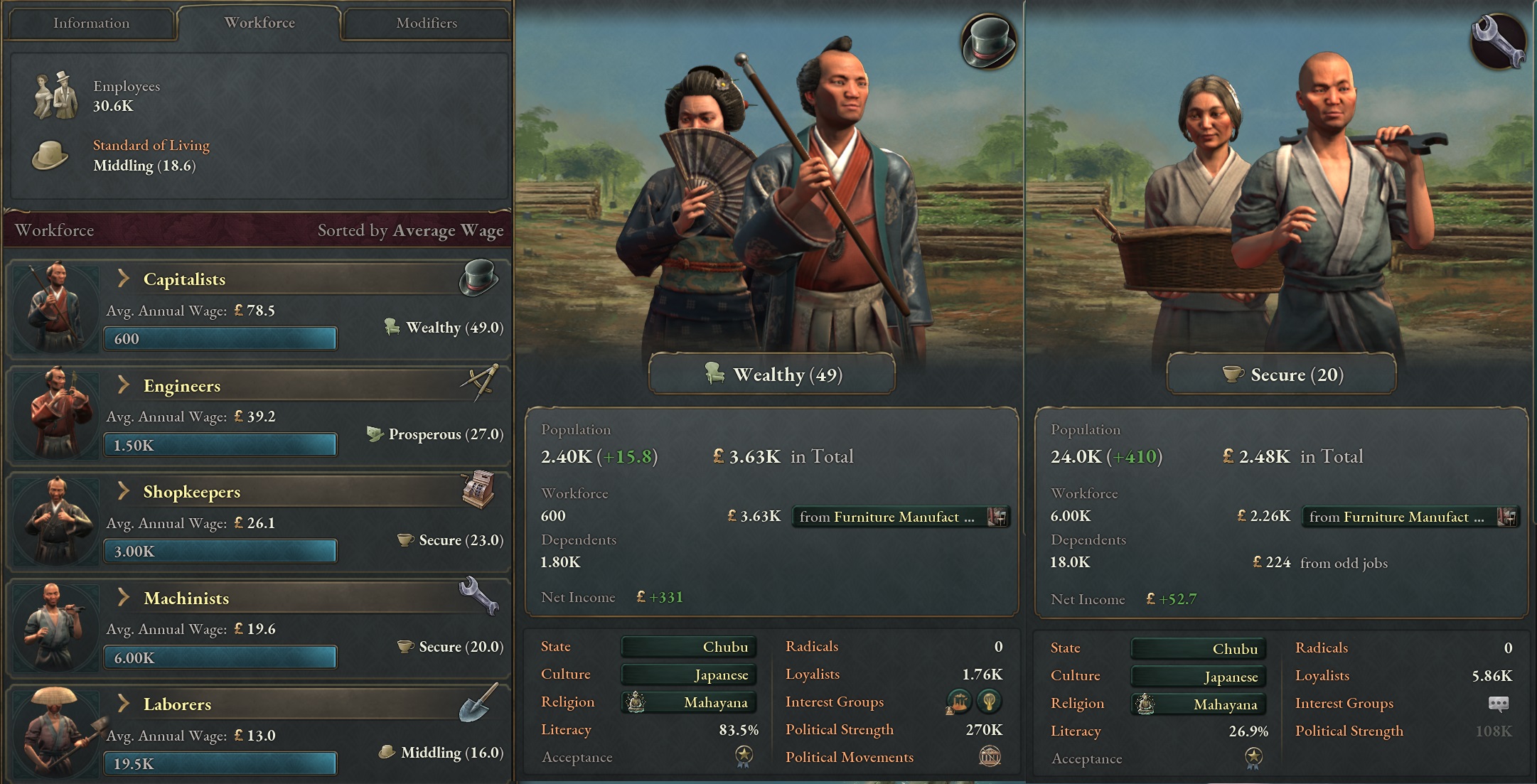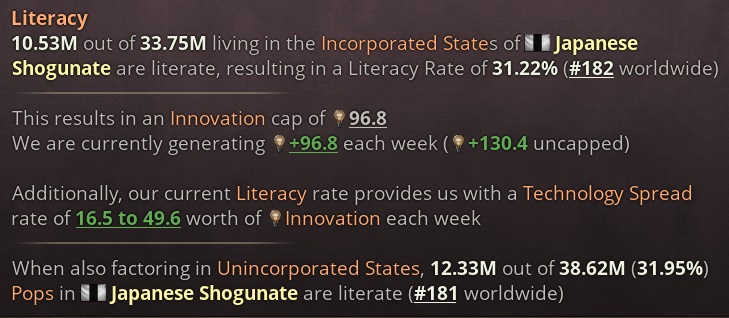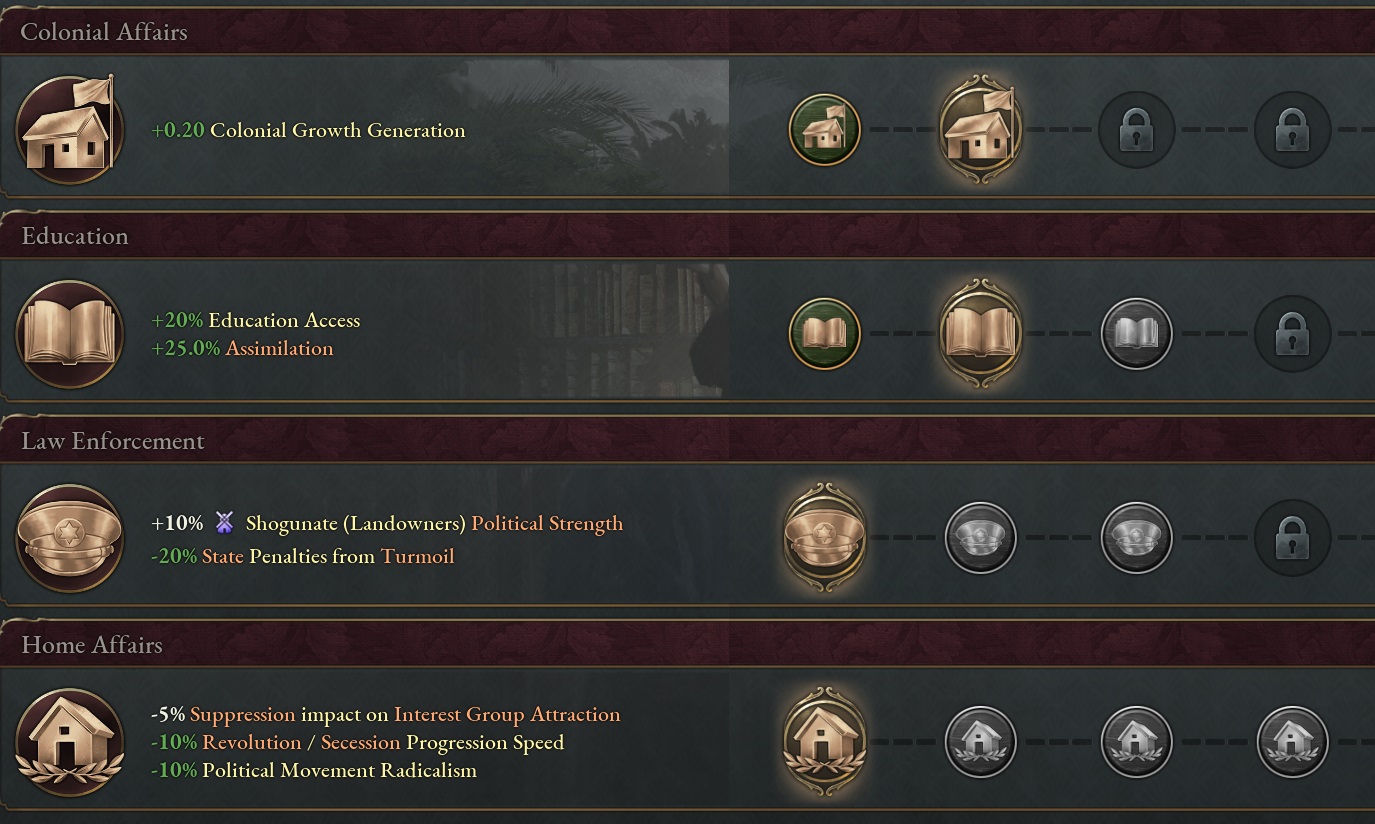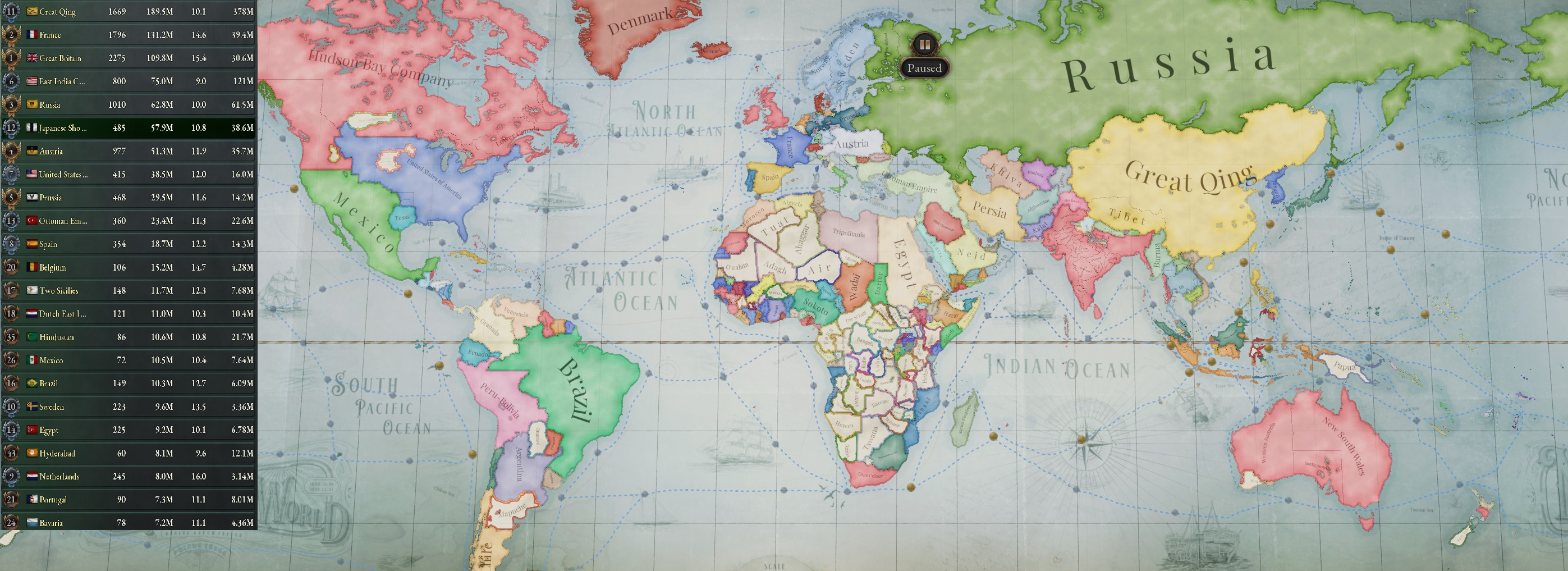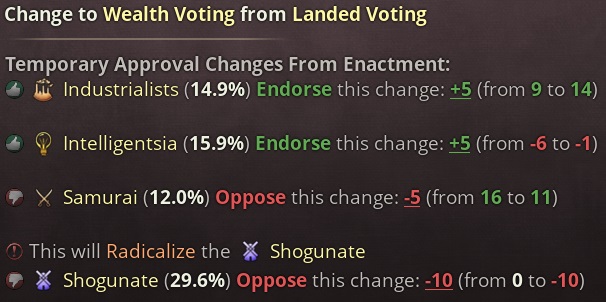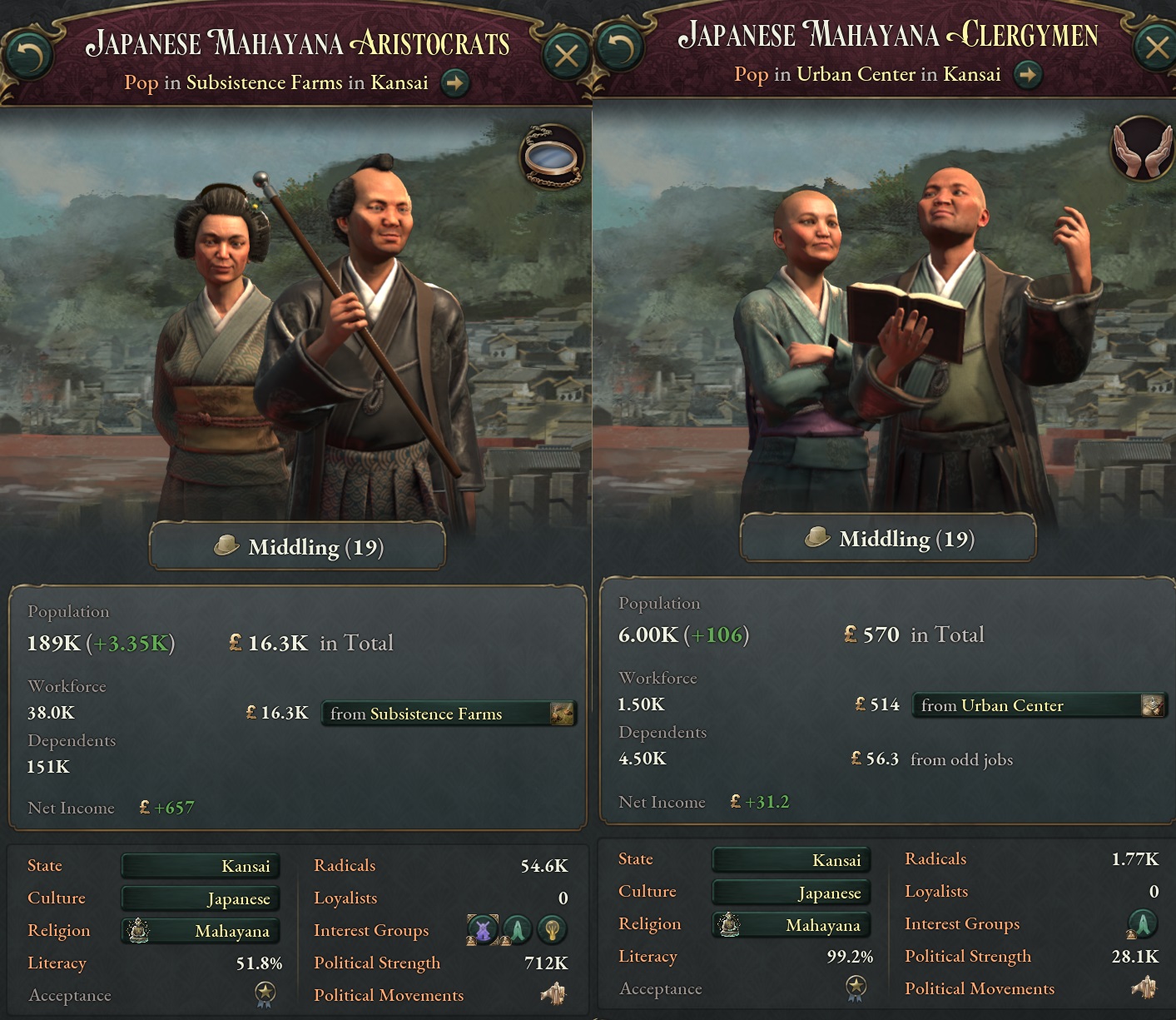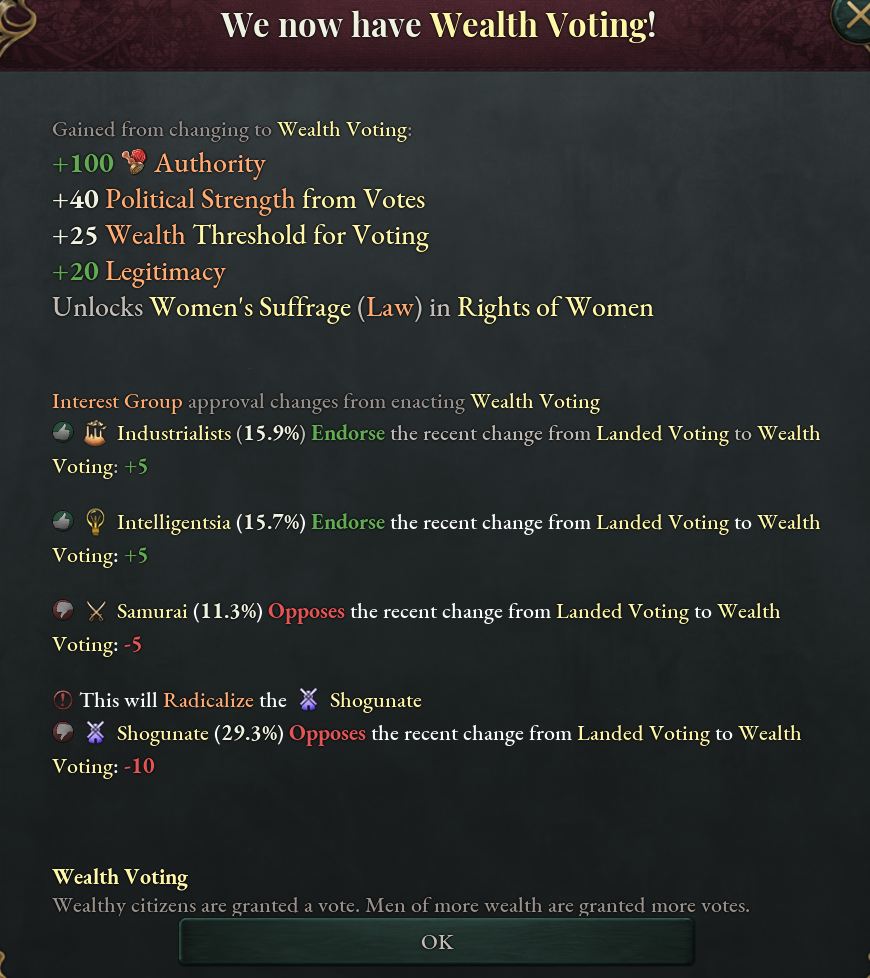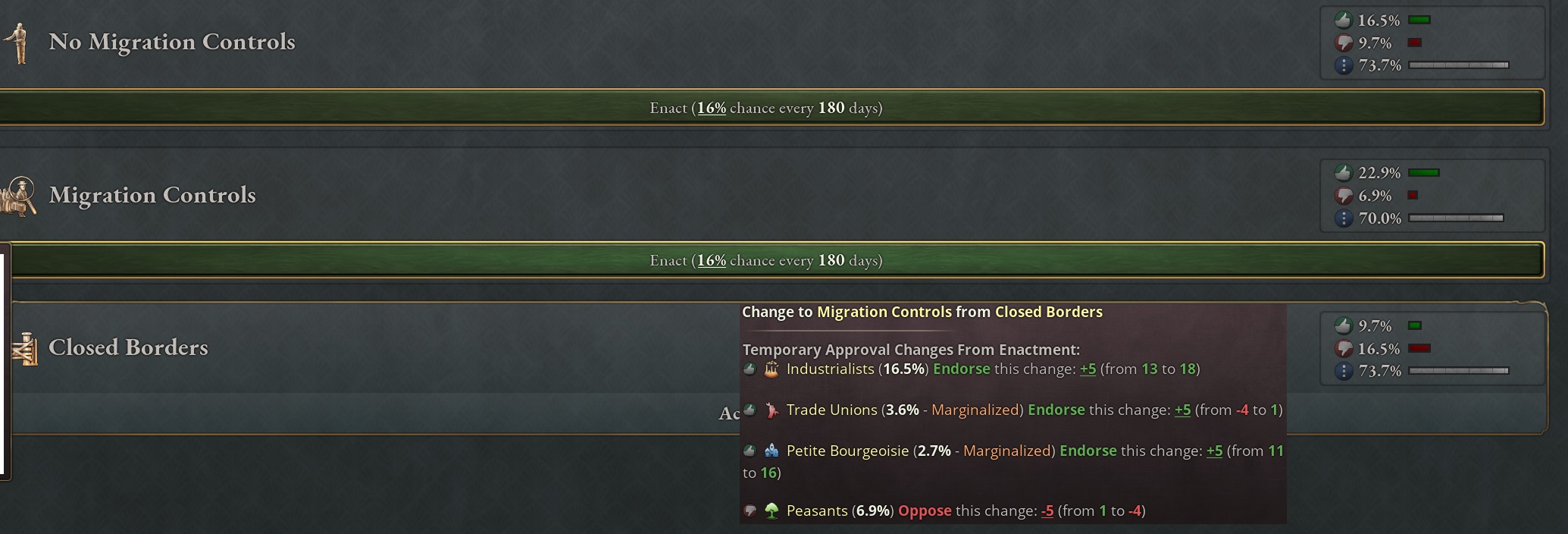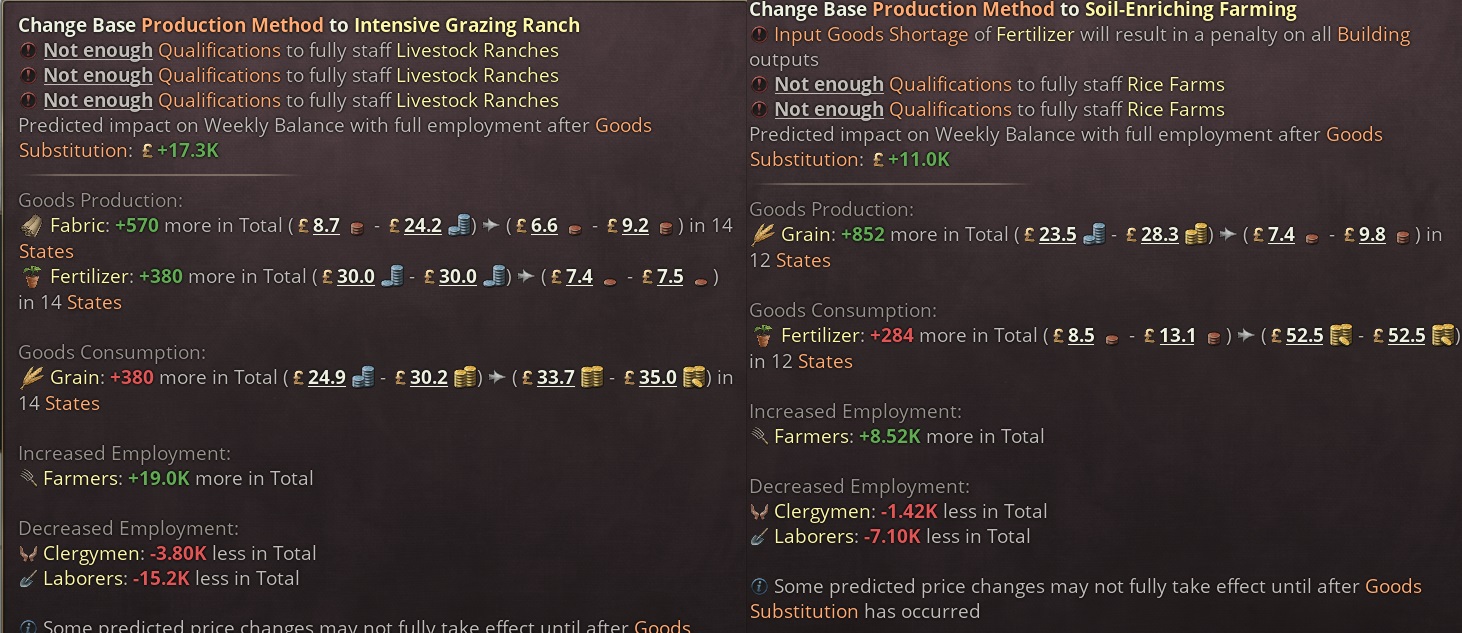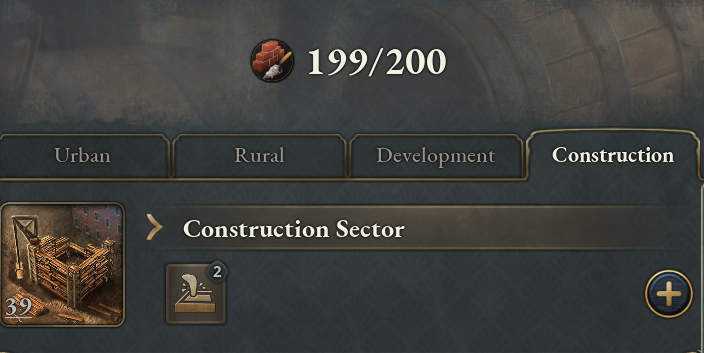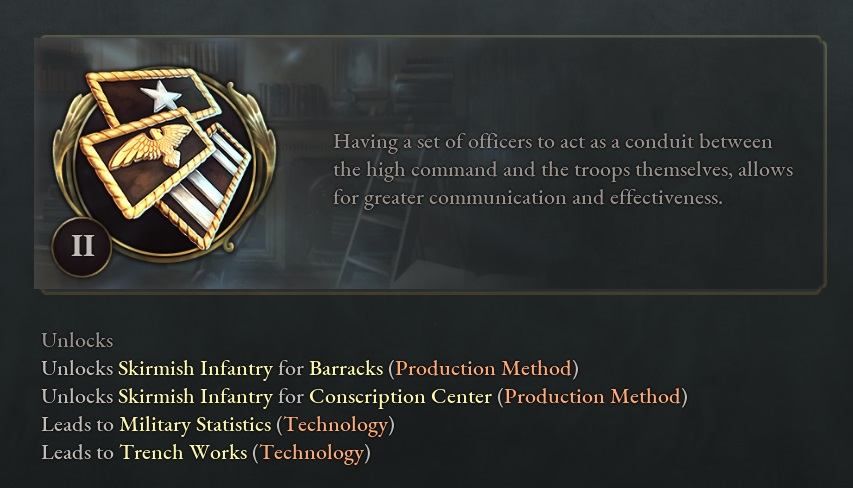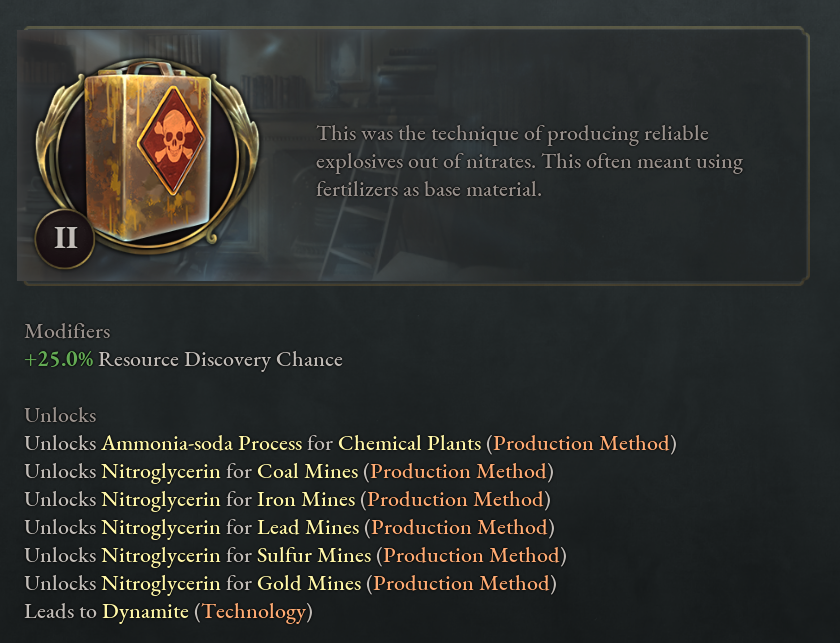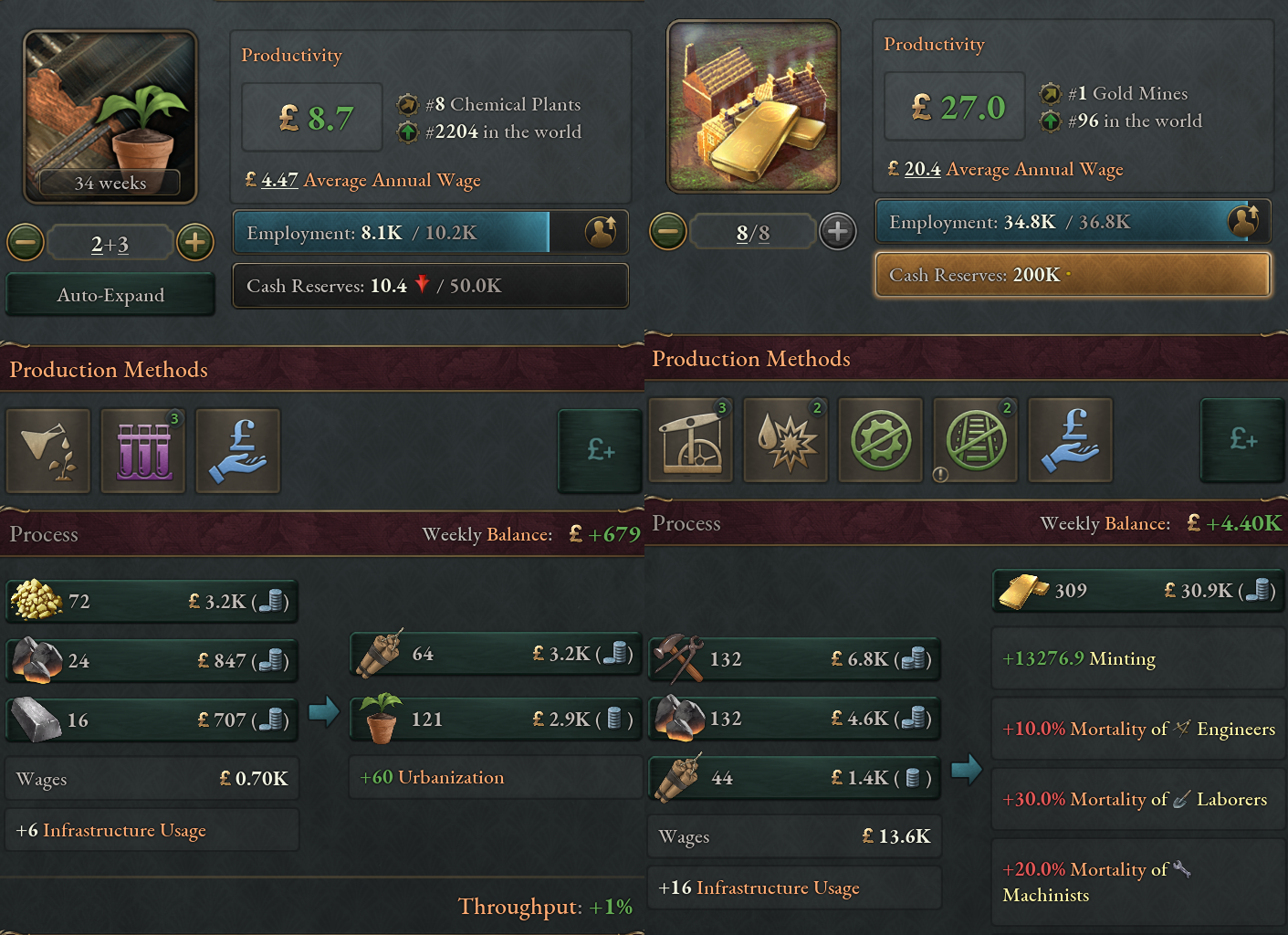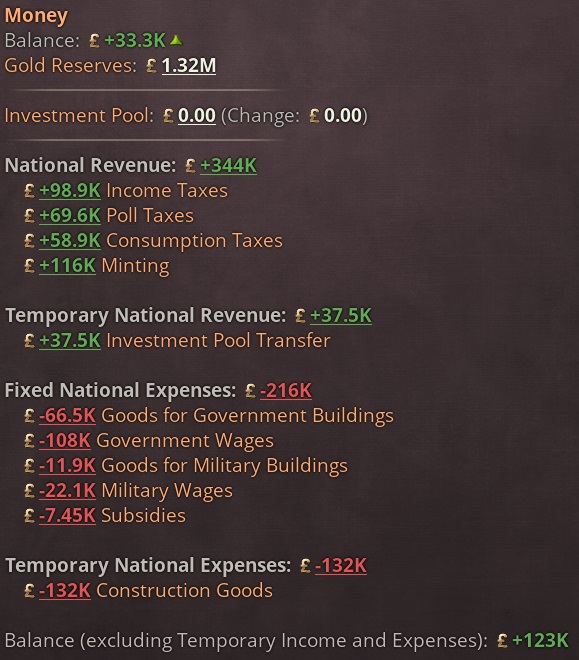Harnessing the Steam
Better Taxation
“Well, this wasn't the toughest,” said Asashi.
Yoshimichi nodded in agreement. “We had the Industrialists and the Samurai behind the plan, after all,” he replied.
“All it took was for us to spend lavishly on charity,” he added, looking quite smug. “Not like we didn’t do it anyway, but we really went overboard with this one.”
Capitalists trying to be nice
“Oh yes, that gathered quite the support for the reform,” Asashi said. “And helped the poor too...”
“Resulting in these poor people paying more taxes afterwards though,” added Yoshimichi.
“Though, I'm pretty sure we are working on ways to ensure that even the poor have enough money for the taxes- and for their everyday costs,” queried Asashi.
“Working on it. Not there yet. Not by far...” '
Better taxation system
“And now what?”
“And now we wait a bit. Still a few months to go and then we get the Central Archives sorted out. And then, with the help of Samurai, we try to implement the Secret Police.”
“They’re what?”
“In theory, the secret arm of the Shogun that will keep his enemies under observation and sometimes with bruises,” grinned Yoshimichi.
“In practice though?”
“We have ensured that the man Ienari chooses to lead them is... well, with more of an Imperial worldview.”
“So, the future secret police would need some secret police to watch out for them?” chuckled Asashi.
Yoshimichi chuckled as well. “This will be an uphill battle though. Intelligentsia does not really like it and the Samurai are the only ones who favor it. But if we do implement, we gain a mighty force, able to suppress some factions- and able to keep the revolutions from happening.”
“Let us do our best to ensure it’s passing then,” said Asashi.
The secret police. Not the most popular law
It was 9th of January, 1852.
Reforming the Bureaucracy
Central Archives were discovered on 27th of April, 1852. This sounds like a trivial thing, but was actually years of preparation in order to standardize the bureaucratic system. The same day, the new system went into effect. Yes, skyrocketing the price of paper, but also creating a more efficient system, where people had little chance to hide from the bureaucratic machine of Japan.
Switching to a more centralized bureaucracy.
This also meant that Japan suddenly had excess bureaucracy. Quite a lot of it, in fact. And since no-one wants state officials to sit idly and do things just to justify their existence (apart from the said state officials themselves, that is), the logical conclusion was to expand the institutions. Both the colonial growth and the education institutions got bumped to the next level. Meaning that in just 50 weeks, schools will get better and the Japanese colonies will grow faster.
Increase of institutions
Another side effect was that there was suddenly more money around. Thanks to both better bureaucracy and a better taxation system. And where else to invest but in construction? By July 1852, all of the Japanese construction industry was using iron-based buildings and some new buildings were built as well, resulting in a mighty construction value of 135. Quite a change from nearly two decades ago.
The construction sector gained most of benefits
Of course, this drove the Japanese budget to red again, but the problem was the price of iron, and that was being solved. Quite efficiently, thanks to the new construction capability.
Gold-gold-gold!
Though Transvaal was available since the conquest of Zulu, the Japanese hesitated. For yes, Transvaal had a very nice amount of gold. It also had serious lack of infrastructure to bring in the necessary tools for large-scale mining- and to transport all this gold back to Japan as well.
So, the Japanese waited. Patiently, knowing full well that the gold is not going anywhere. Until on 28th of April, 1852, the Japanese started the play to conquer the nation.
On 23rd of August, seeing no-one would help them and with Japanese soldiers enjoying themselves on their borders, the Dutch found their chances akin to snowball's chance in hell and surrendered, keeping their lives, but giving up their lands.
Time to get the gold
And what lands they were. News of the new gold fields discovered arrived in June, making the state able to hold 7 gold mines and in addition, 5 gold fields. A paradise for gold miners for sure. Plus, the coal reserves in the province were perhaps the biggest in the world, and there was plenty of iron as well. Truly, a gem in the Japanese crown.
Just, as said, the infrastructure was atrocious.
Look at all that gold... and coal.. and iron. And infrastructure.
Other Matters
In August 1850, Japanese adopted the idea of army reserves. Meaning, if needed, more troops could be fielded, recruited from your average population. Let us hope it never comes to that. More importantly, Japan started to adopt better cannons for the army. Expected results- soon.
Meh.
In November 1852, the first pass of the Secret Police law came to fruition. The Intelligentsia had been busy, making a movement to preserve no home affairs, just a thing you need a Secret Police to stop. They were told they have nothing to worry about, but pretty much everyone knew this was a lie. And Intelligentsia was not happy.
Don't worry, it will be fine!
Harnessing the Steam
In fact, the capability of the Japanese infrastructure had been stretched thin. All states, apart from Shinjuku, were either at the capacity or over it by a margin. The situation was not catastrophic yet, for there were ports that could be built, but the horse cart jams were getting out of hand almost everywhere in Japan. Not to mention a bit of an infrastructure crisis in Transvaal. Even Aceh and Malaya lacked the proper infrastructure.
Lack of infrastructure is getting out of hands
Fortunately for Japan, on 31rd August of 1852, the first drafts of the railroad came through. And the construction started immediately.. Incidentally, there already was a motor industry factory in Kyushu, waiting for the first orders of steam engines.
Fortunately, a solution arrives
The construction started immediately. In Kansai, in Chubu, in Kanto, in Tohoku and Kyushu- all the states where infrastructure was stretched thin. And two in Transvaal. Making the fresh conquest a state with the most advanced rail infrastructure in the Empire when it was finished. For now, at least.
The railway construction was given a priority and perhaps it is the most telling thing of Japanese growing power- the nation was able to construct seven quite complex infrastructure objects at the same time and even have a few men left over tinkering with iron mines in Shikoku.
Total 7 railways constructed simultaneously
The 7th February of 1853 was a historical day for Japan. It was when the first train left the capital of Kyoto, then through Edo and ended up in Sendai, carrying the Emperor Komei with him. A trip that would have taken weeks before was now completed in a single day. Train, moving at a breakneck speed of 50 kilometers per hour, drove some cows mad, scared a lot of people but even more came to the tracks to see the Emperor and the new contraption and to wave and cheer.
The Age of Steam had begun
In Edo, Komei met with the aging Tokugawa Ienari, who watched the thing in amazement, but refused to enter it himself.
It was a major engineering achievement. The line was little over 800 kilometers long. Went through some quite mountainous terrain. Had two pairs of rails, running parallel. Was using Japanese native trains, though build by western designs.
It runs from Kyoto to Nagoya, the capital of Chubu prefecture. From there, it hugged the coastline, passed Mount Fuji and reached Edo, the capital of Shogunate.
Kyoto-Edo railway
From there, one could take another train to the north, to Tohoku, to their capital, Sendai. In fact, the Japanese got a bit carried away with this one. There was Edo-Hitachinaka-Fukushima-Sendai line, there was Edo-Takasaki-Fukushima-Sendai line and there was also Nagoya-Niigata-Fukushima-Sendai line. Sendai was very popular these days. ‘
Lots of options if you want to get to Sendai
Kyushu, understandably, being a separate island, was not connected to the network. But it got its very own railway system, connecting the capital Fukuoka to the rest of the island. Most importantly, making sure that coal from the mines gets efficiently transported into harbor and loaded to ships, where it is distributed to the rest of Japan.
Local railway of Kyushu
Finally, there was Transvaal that got the most extensive rail network. Pretoria was connected to all of the outlying towns by a pair of rails. Especially the ones that produce valuables. Making the Japanese conquest a surprise blessing, for the state was struggling before to keep the flow of goods happening.
This was where it was needed the most
In addition, rail construction began in Zululand. Mostly to connect Transvaal properly to the seaports. In Aceh and Malaysia as well. And in Japan proper, the Island of Shikoku and Chugoku state stated the construction as well, though these were not prioritized no more.
The Age of Rail had begun for Japan.



